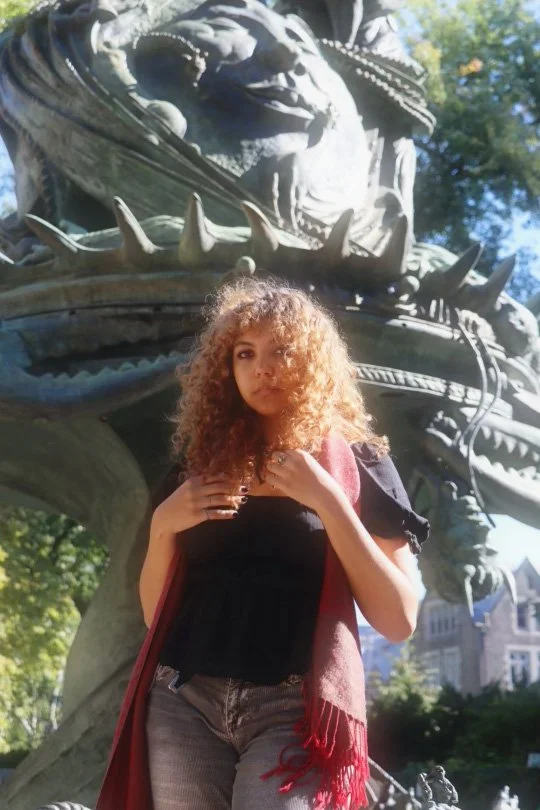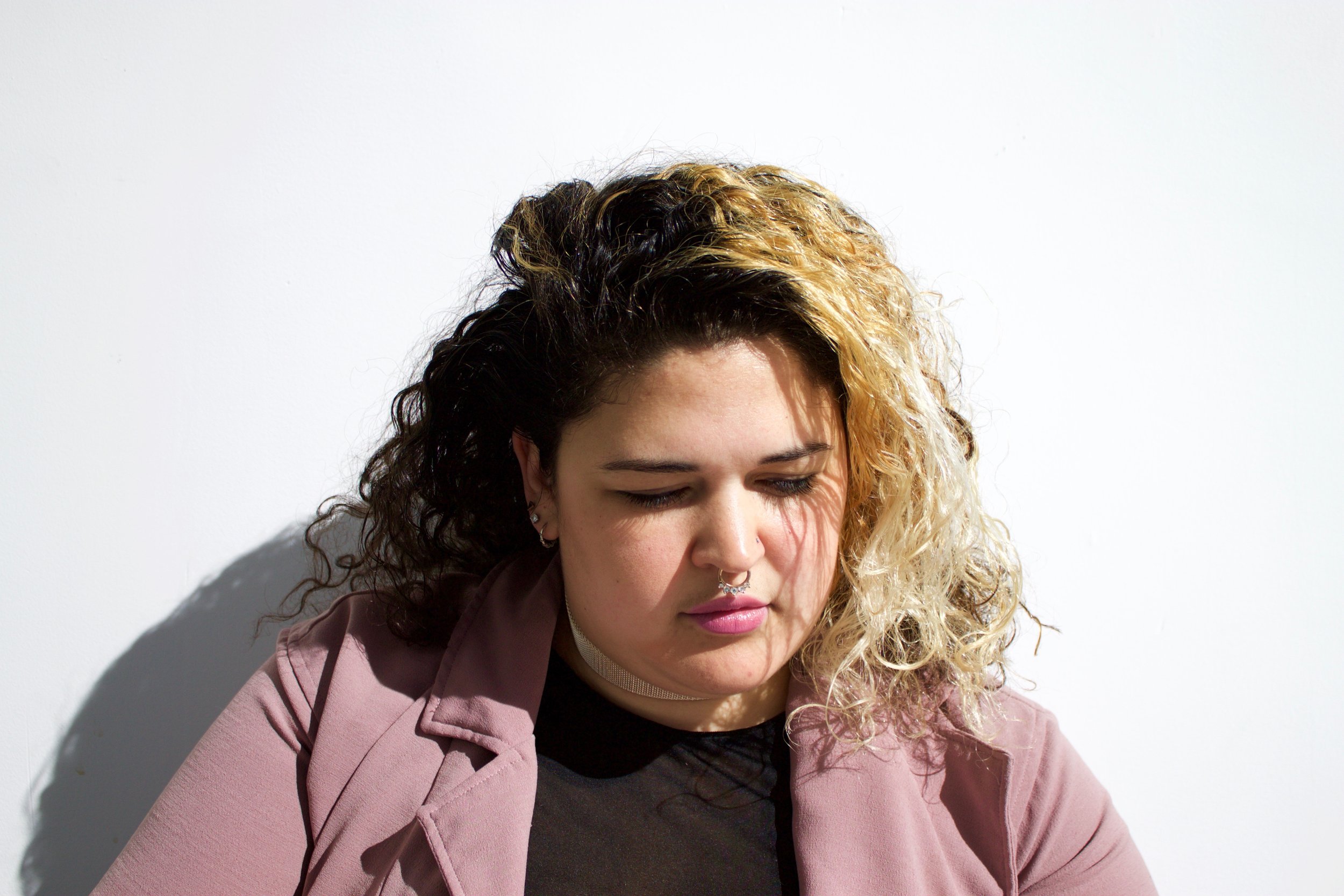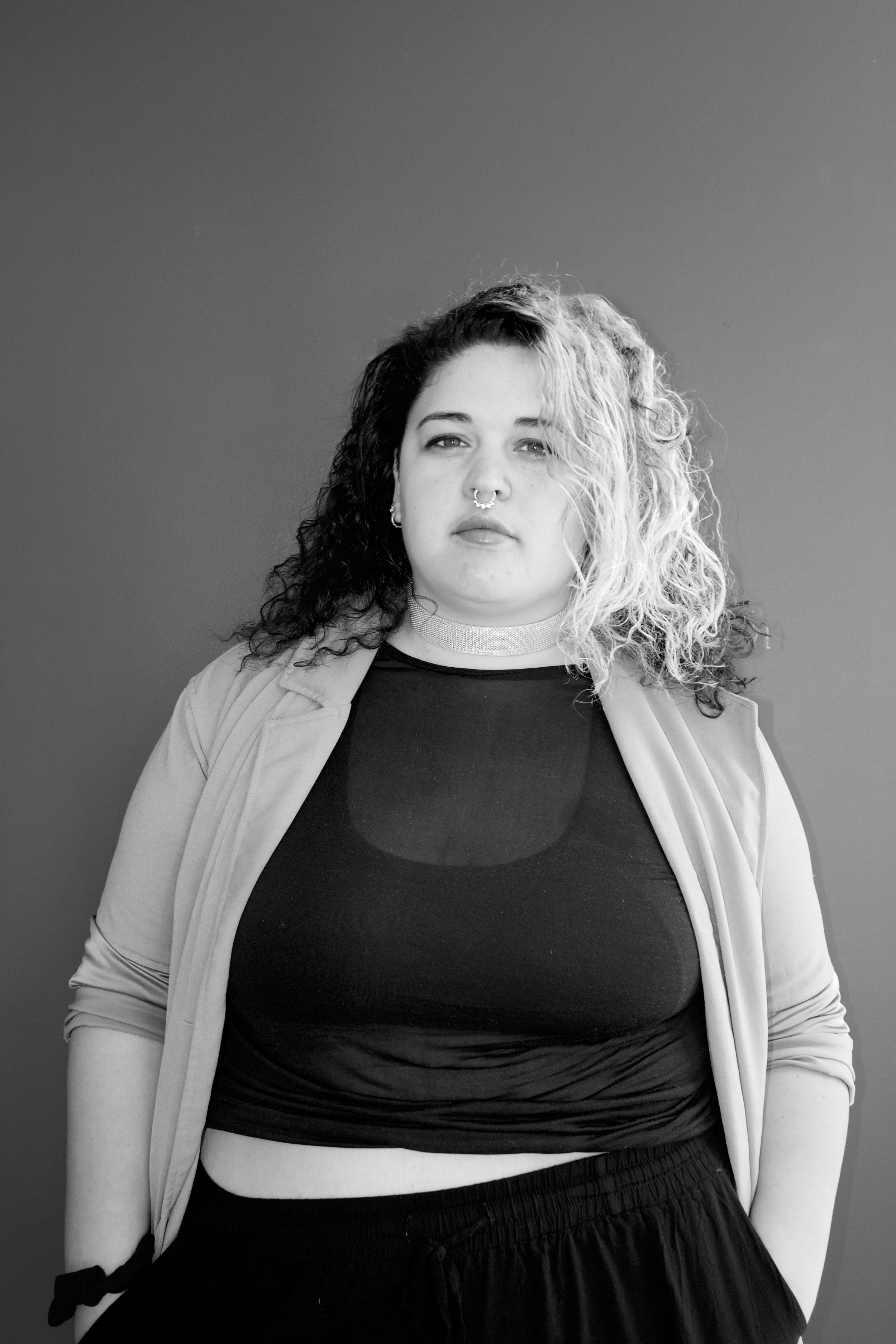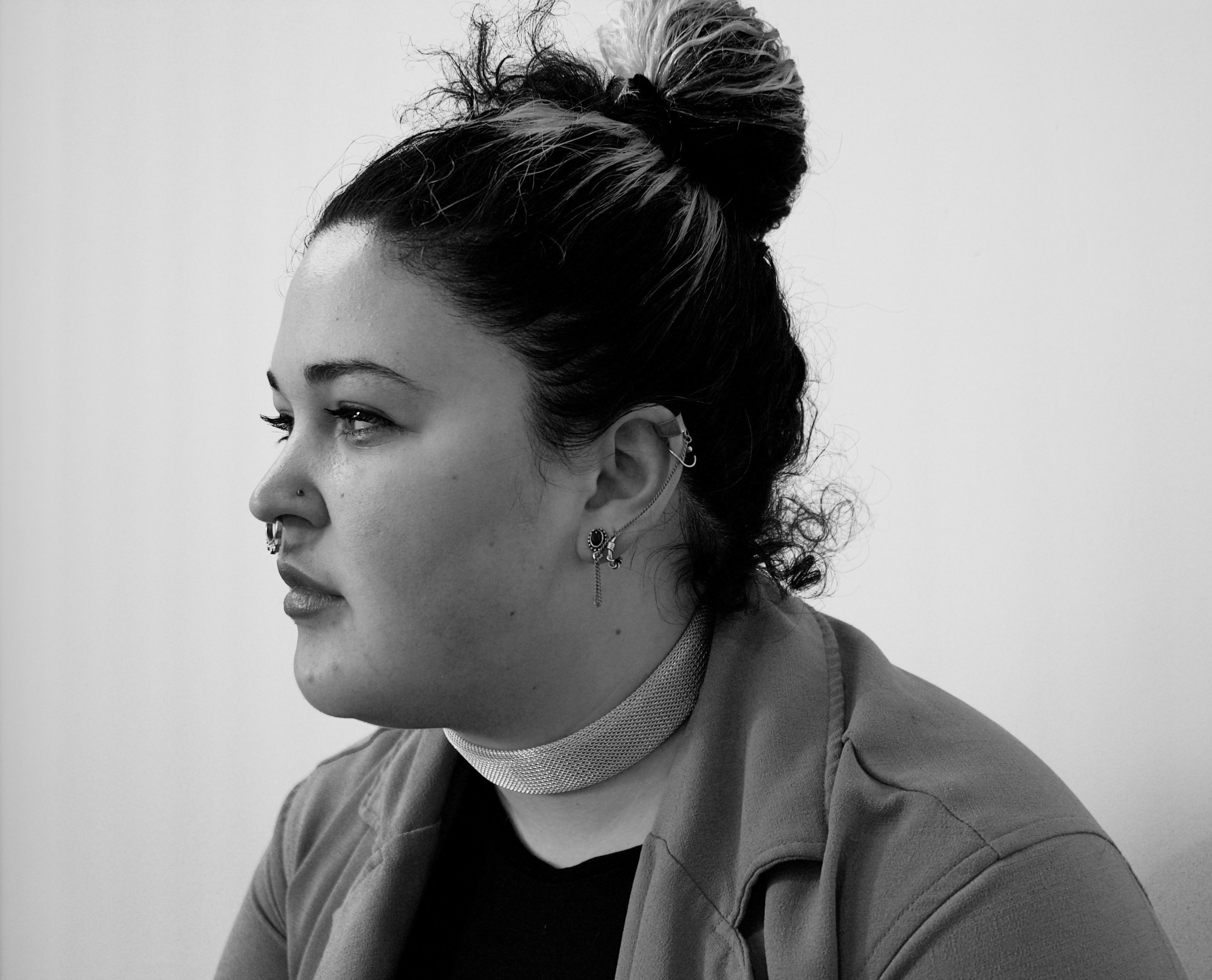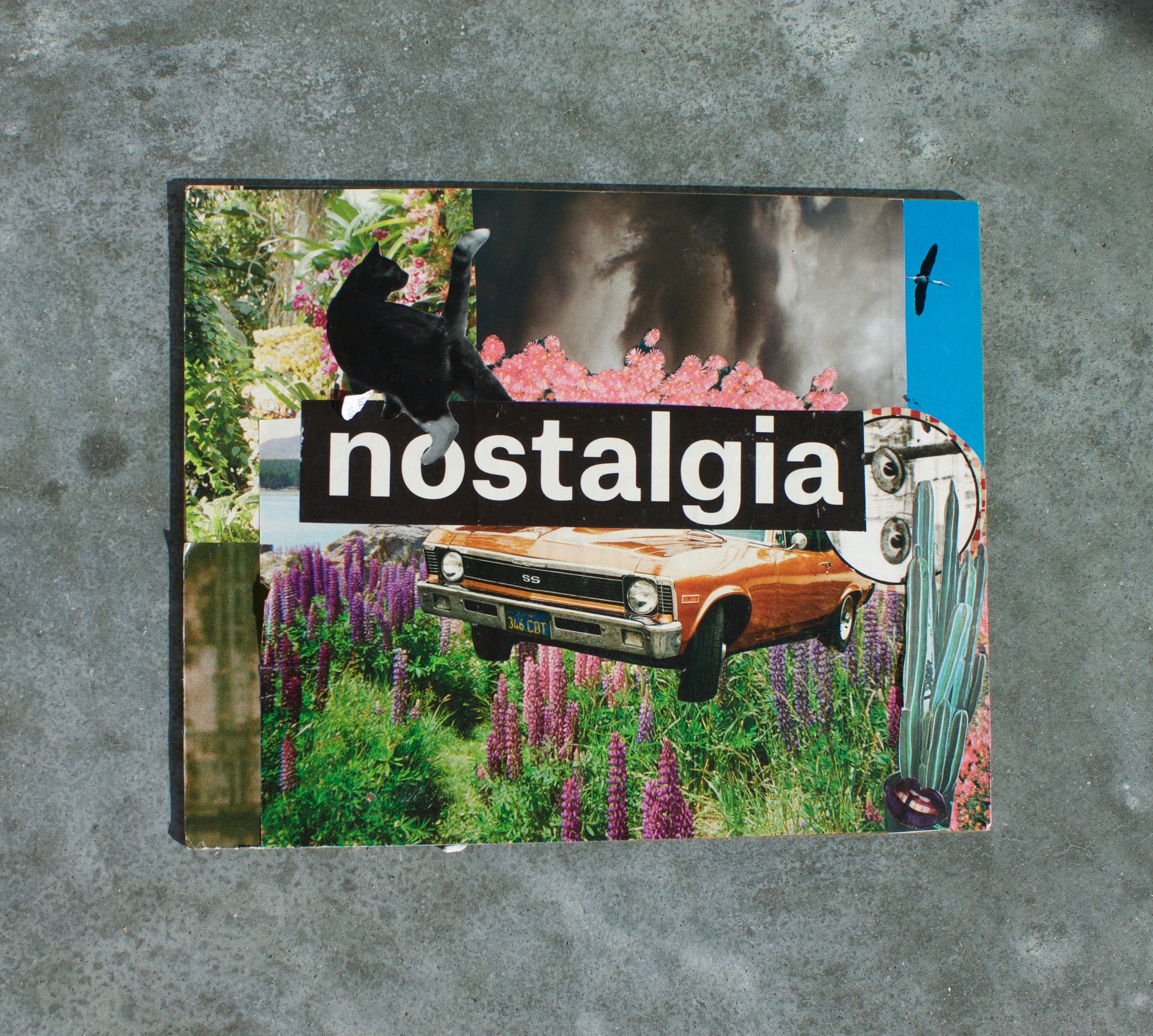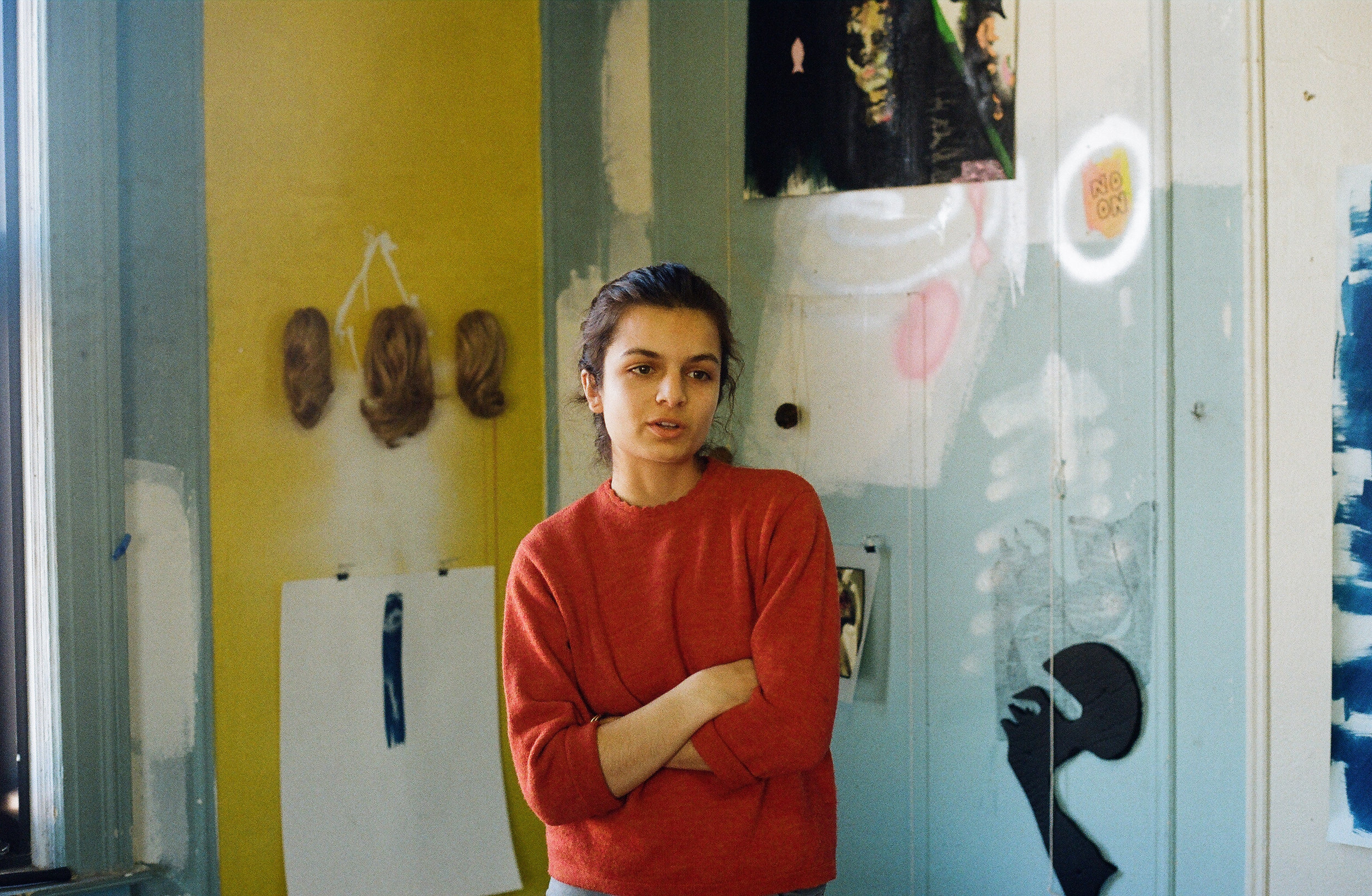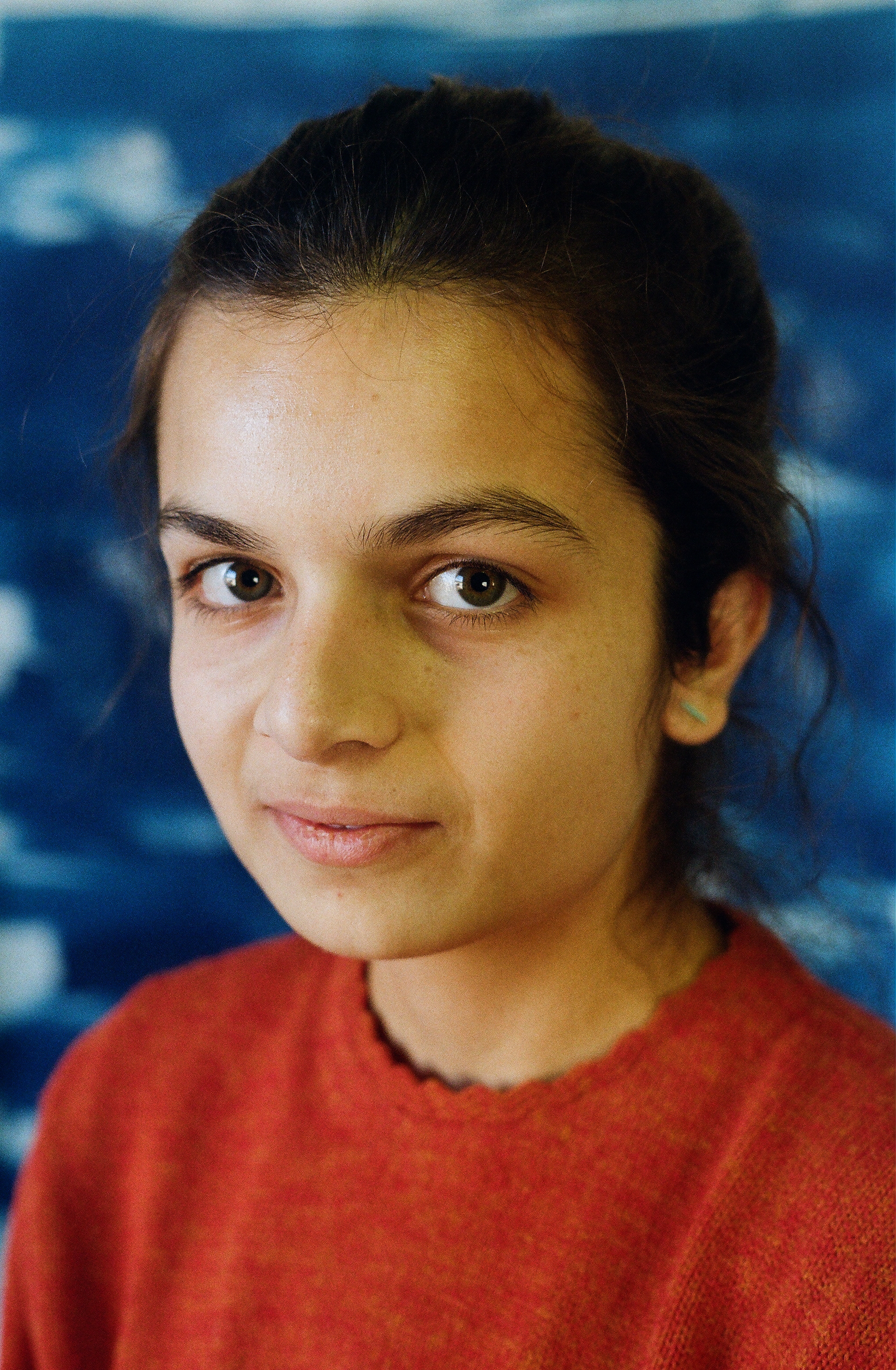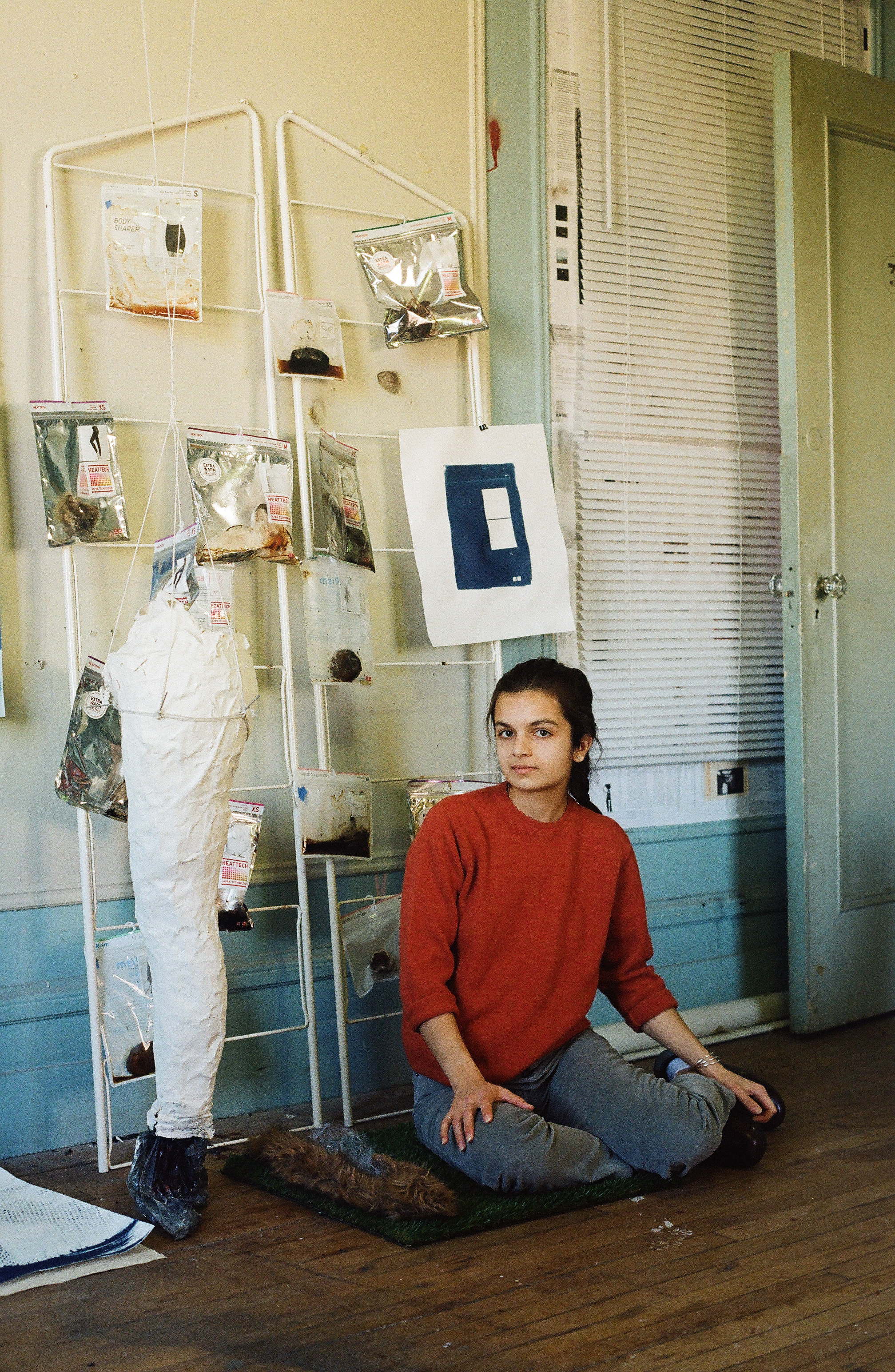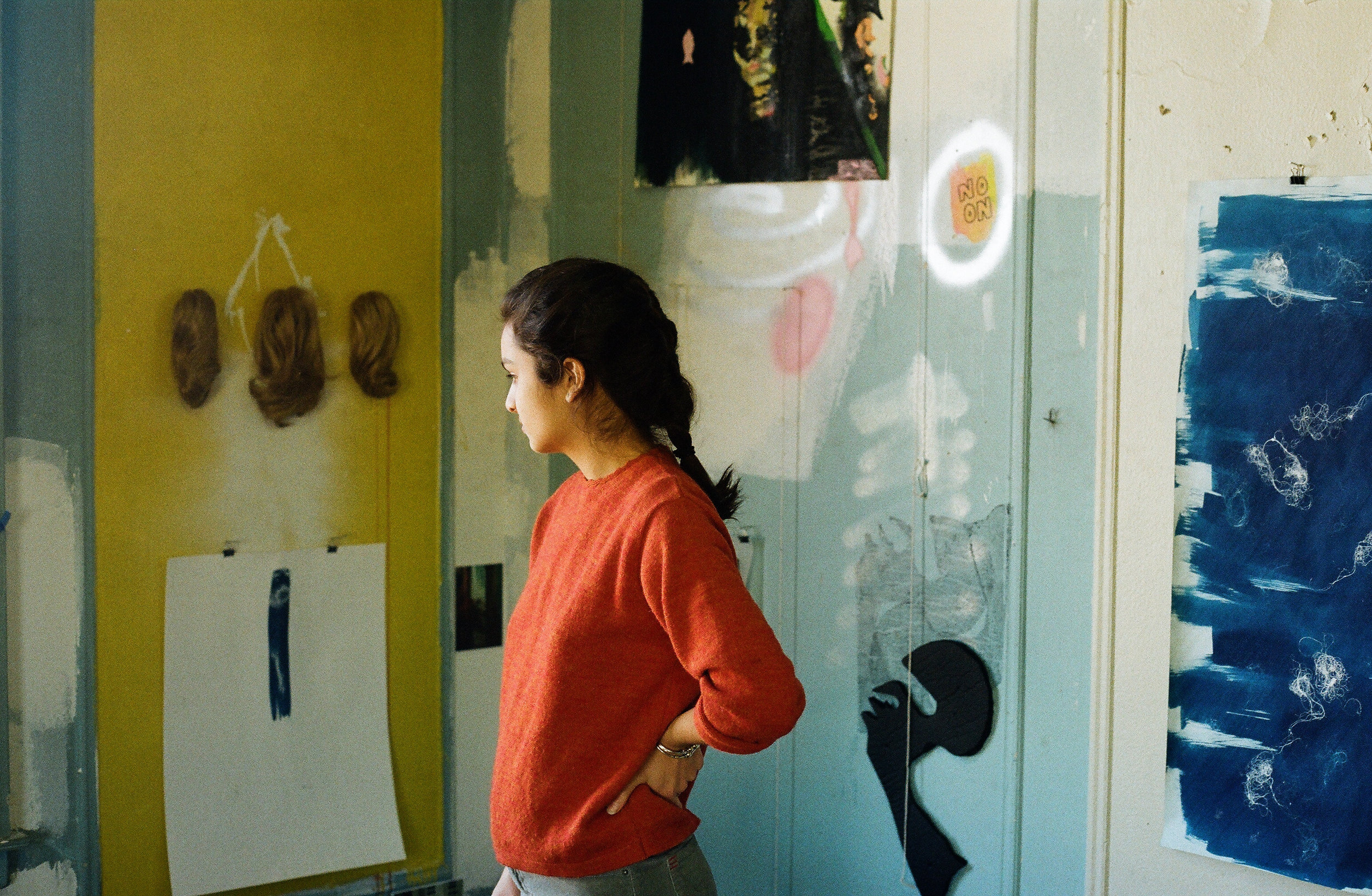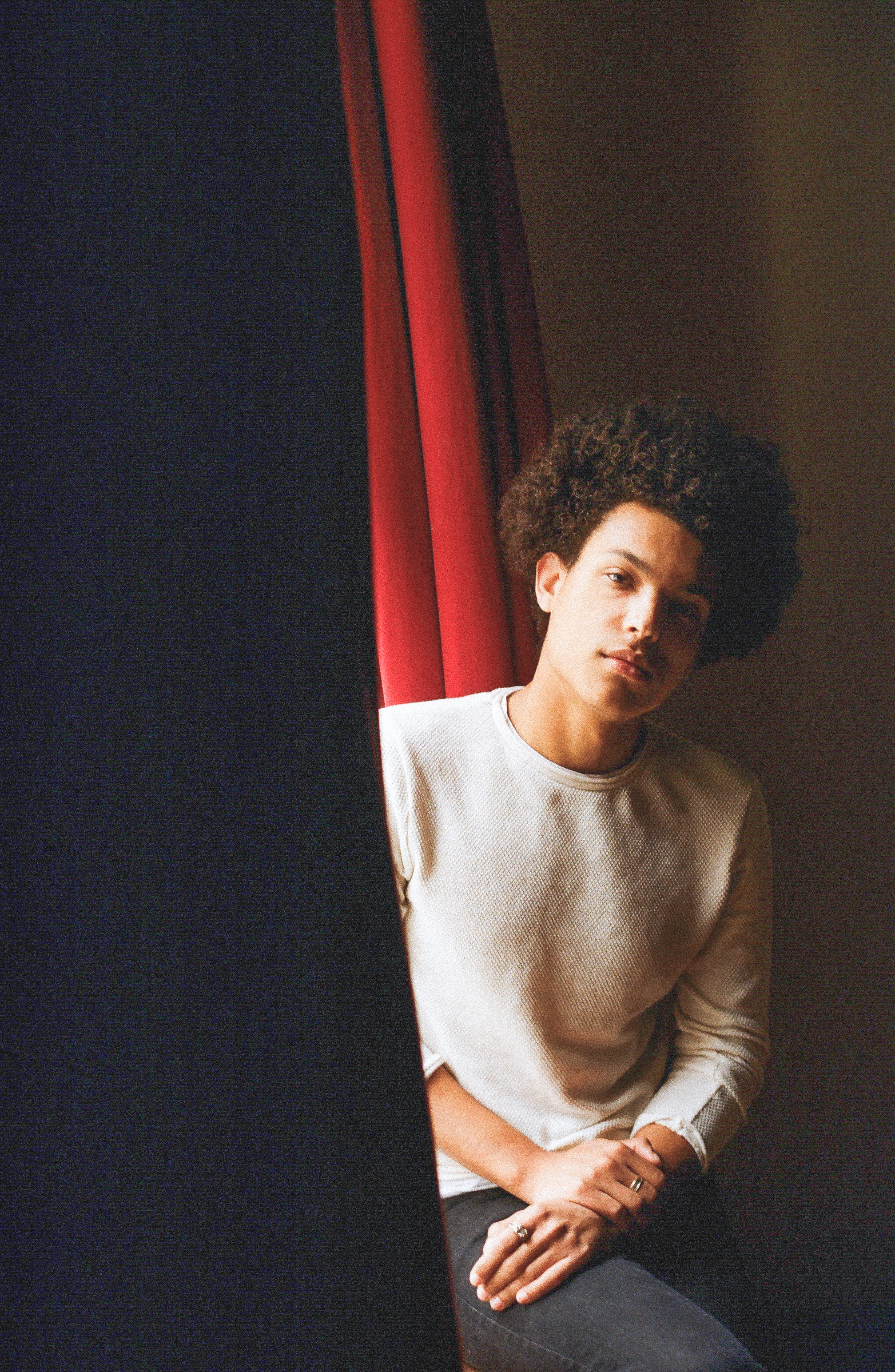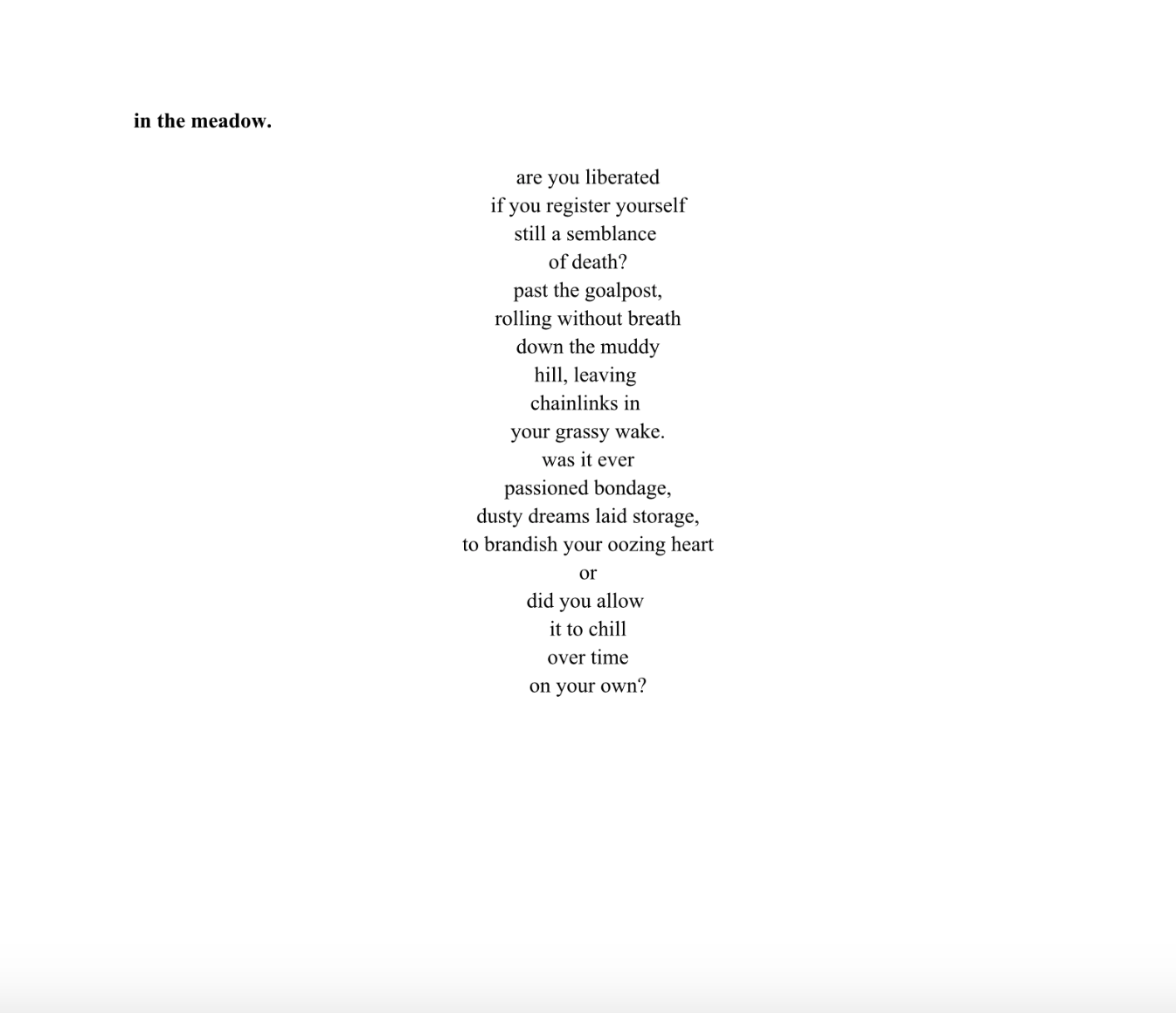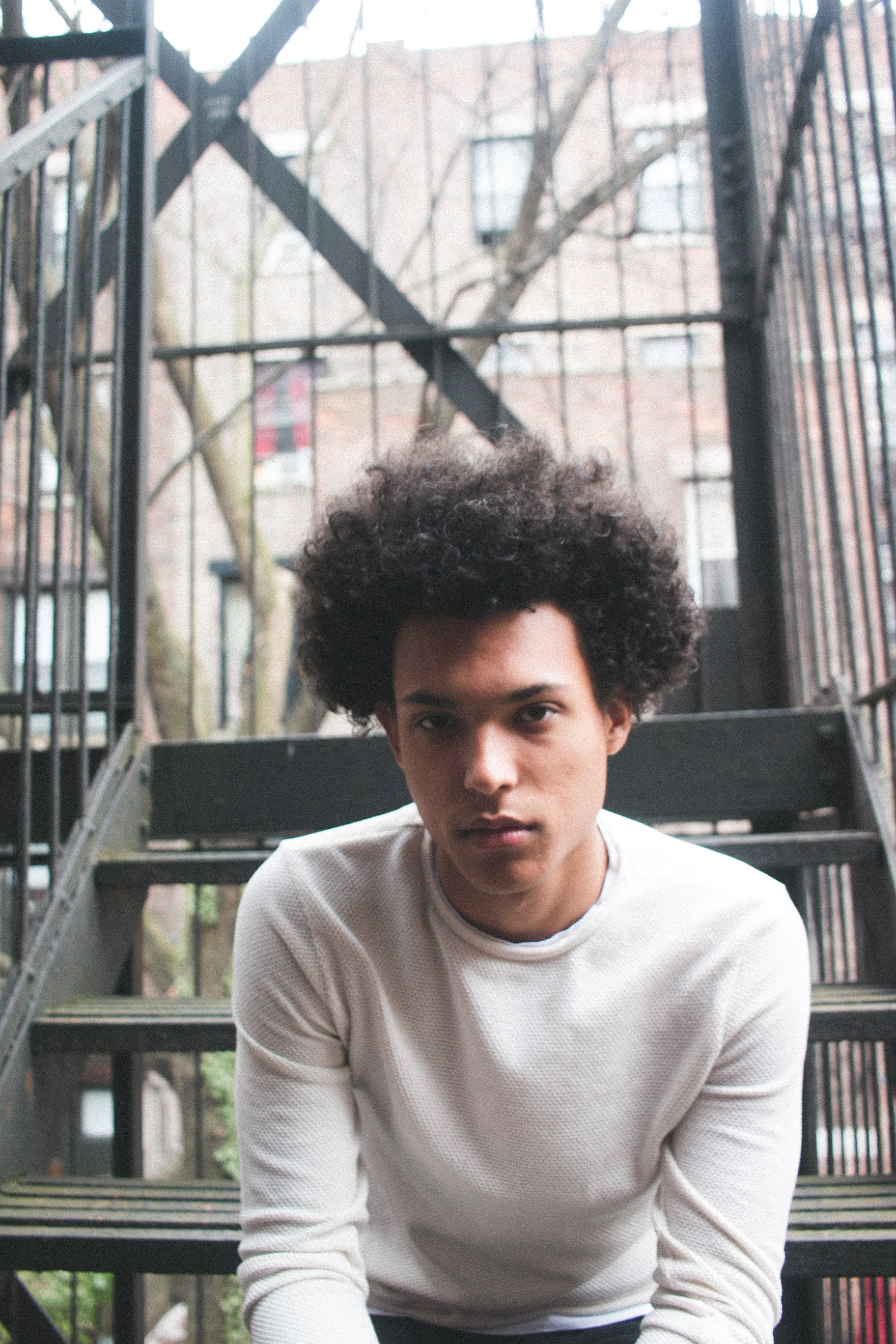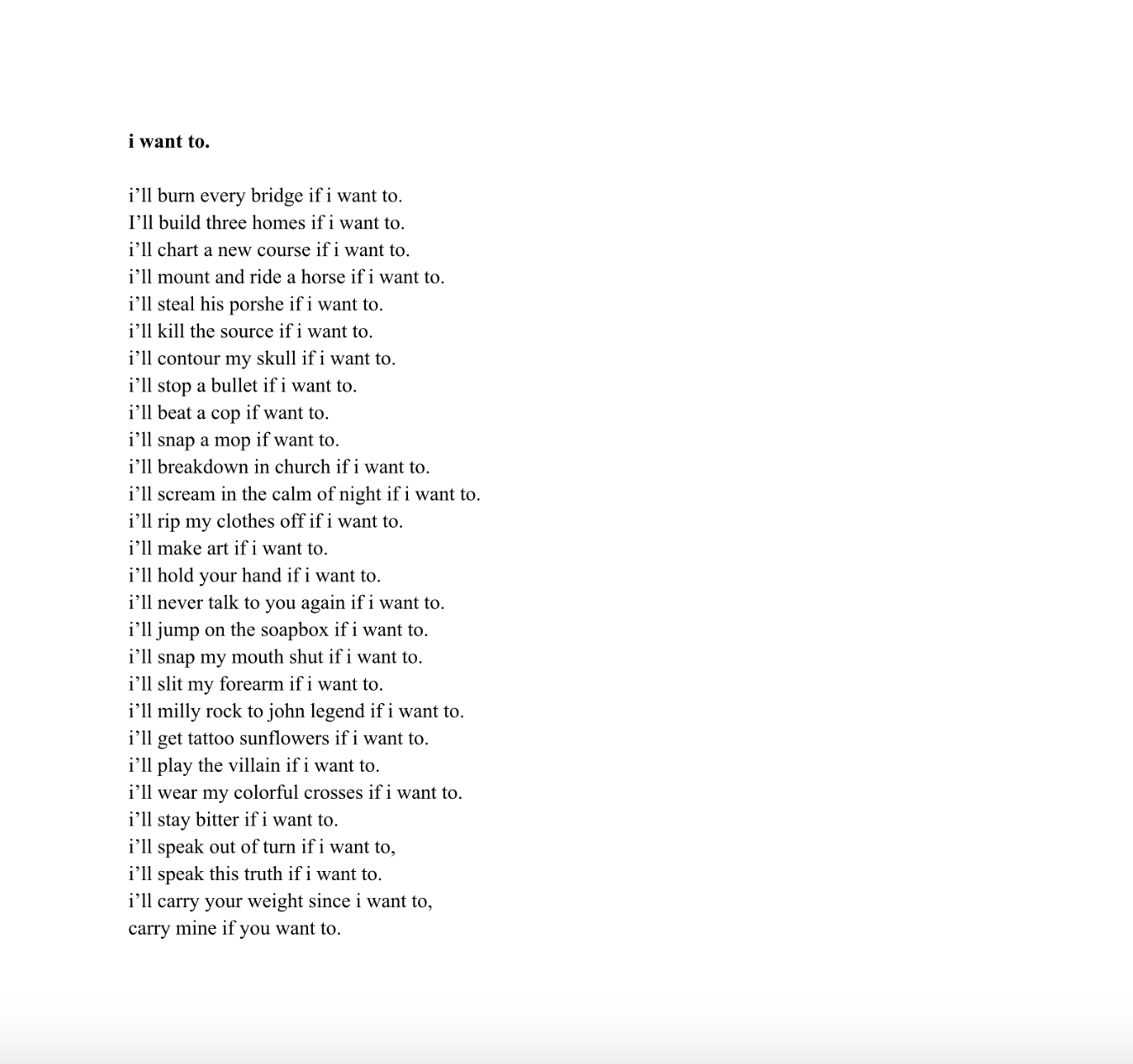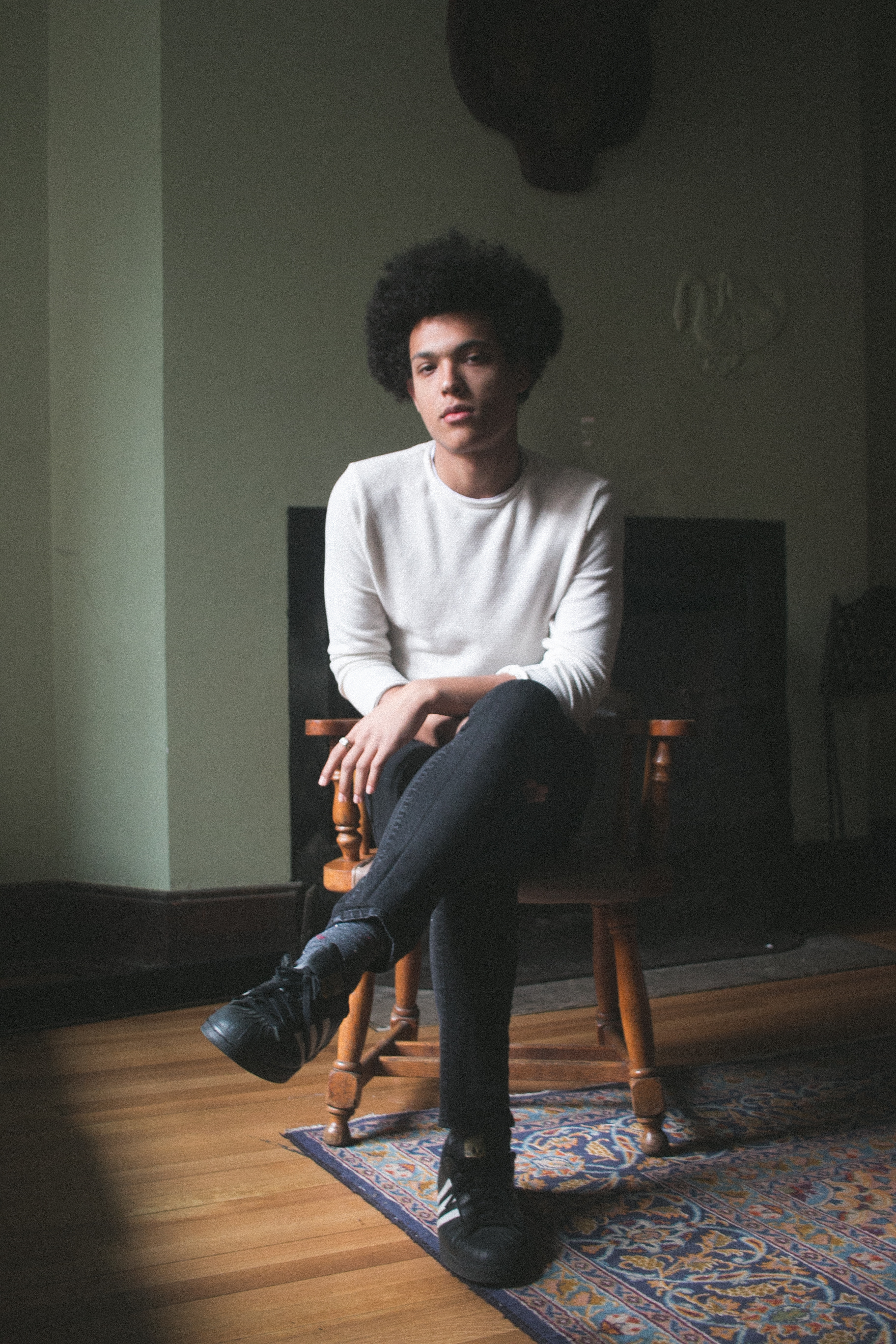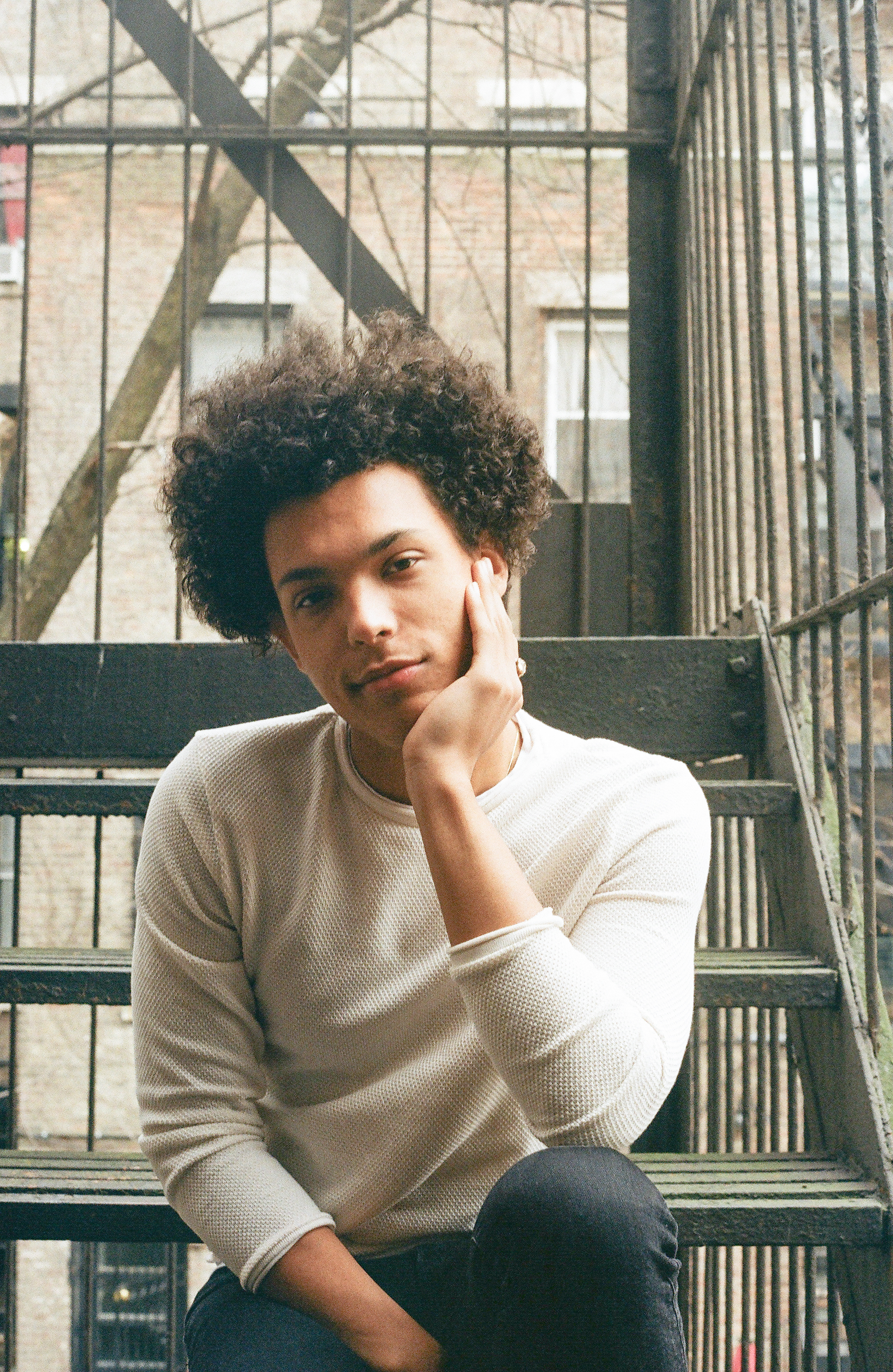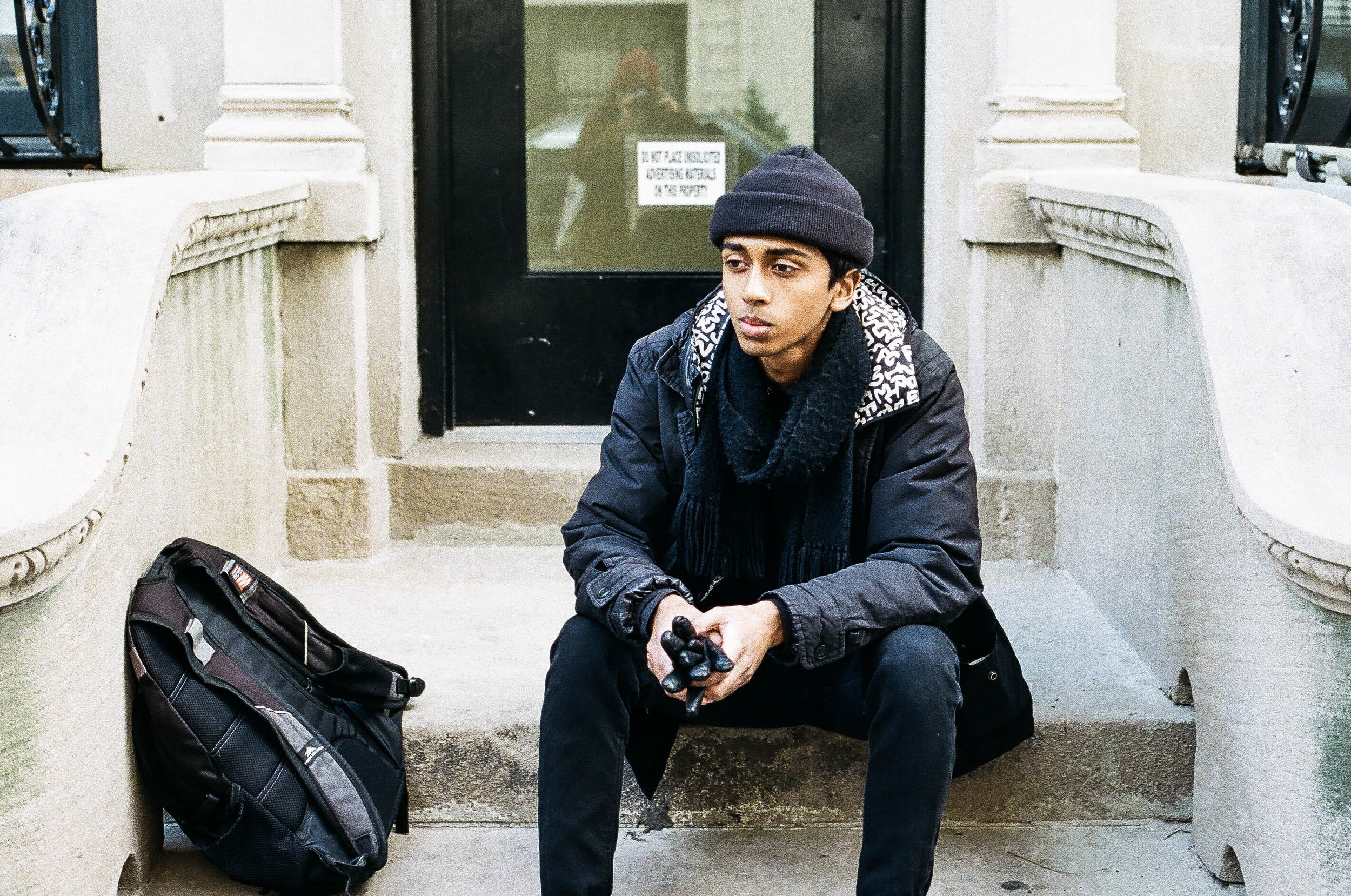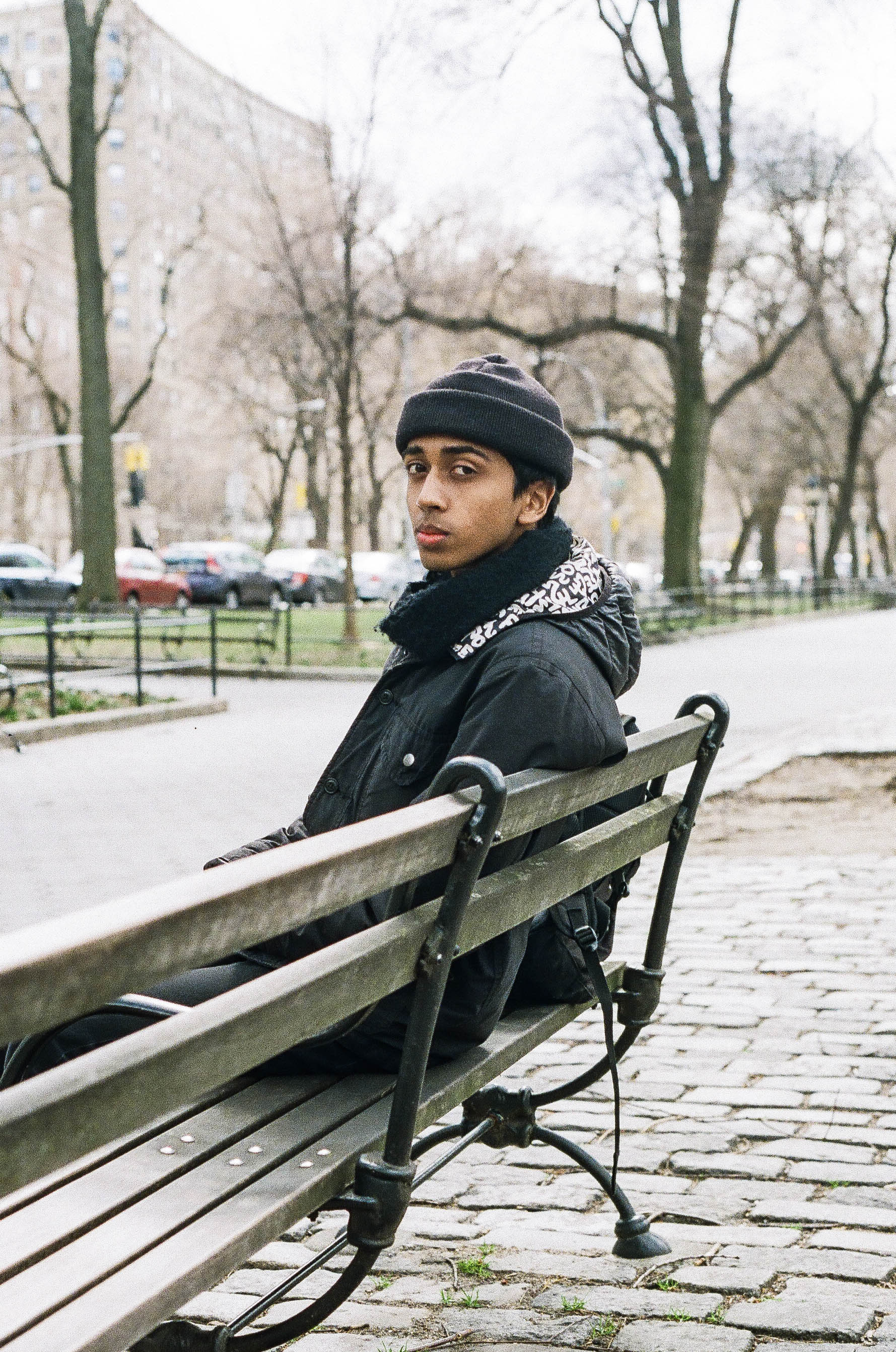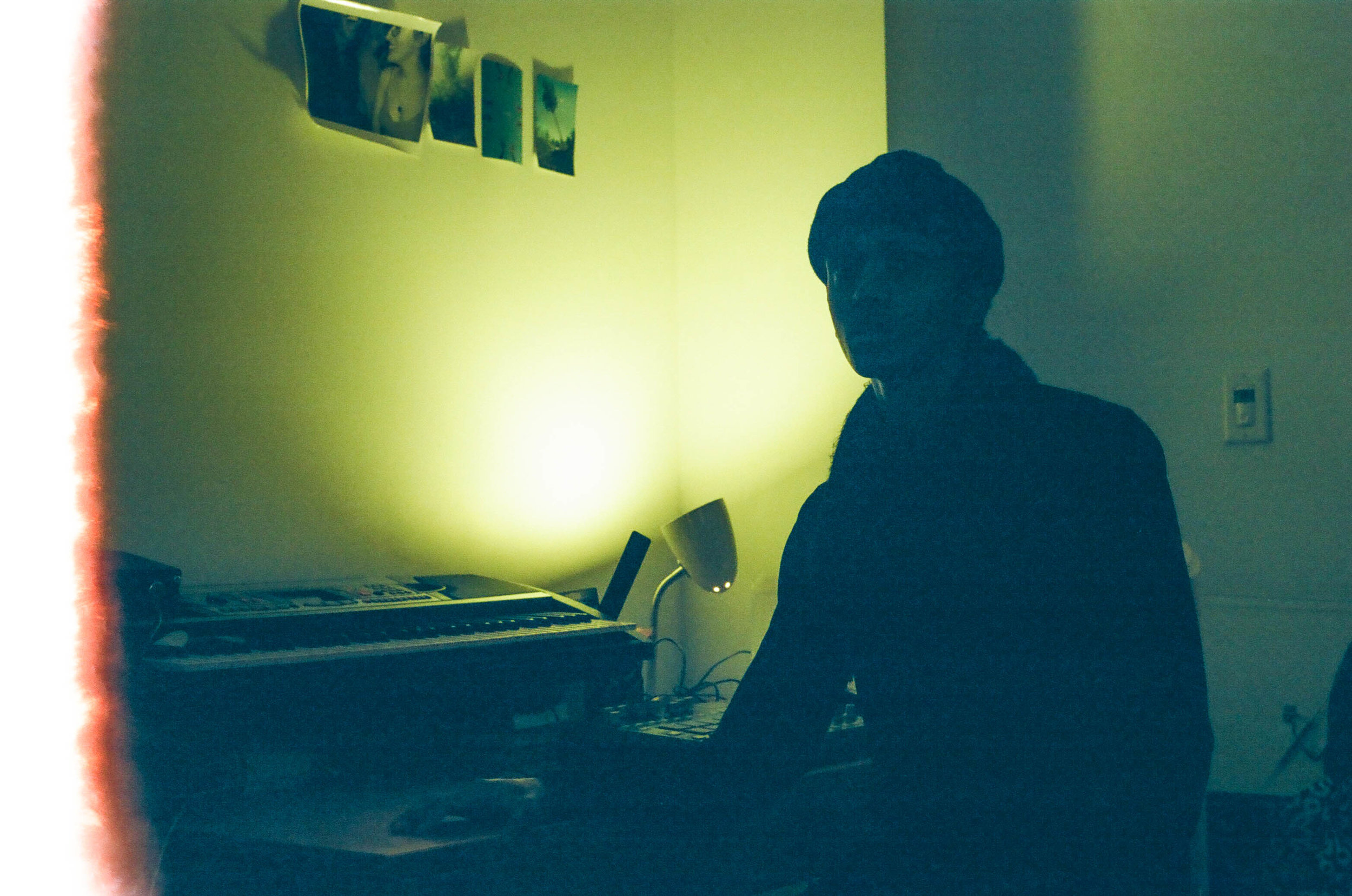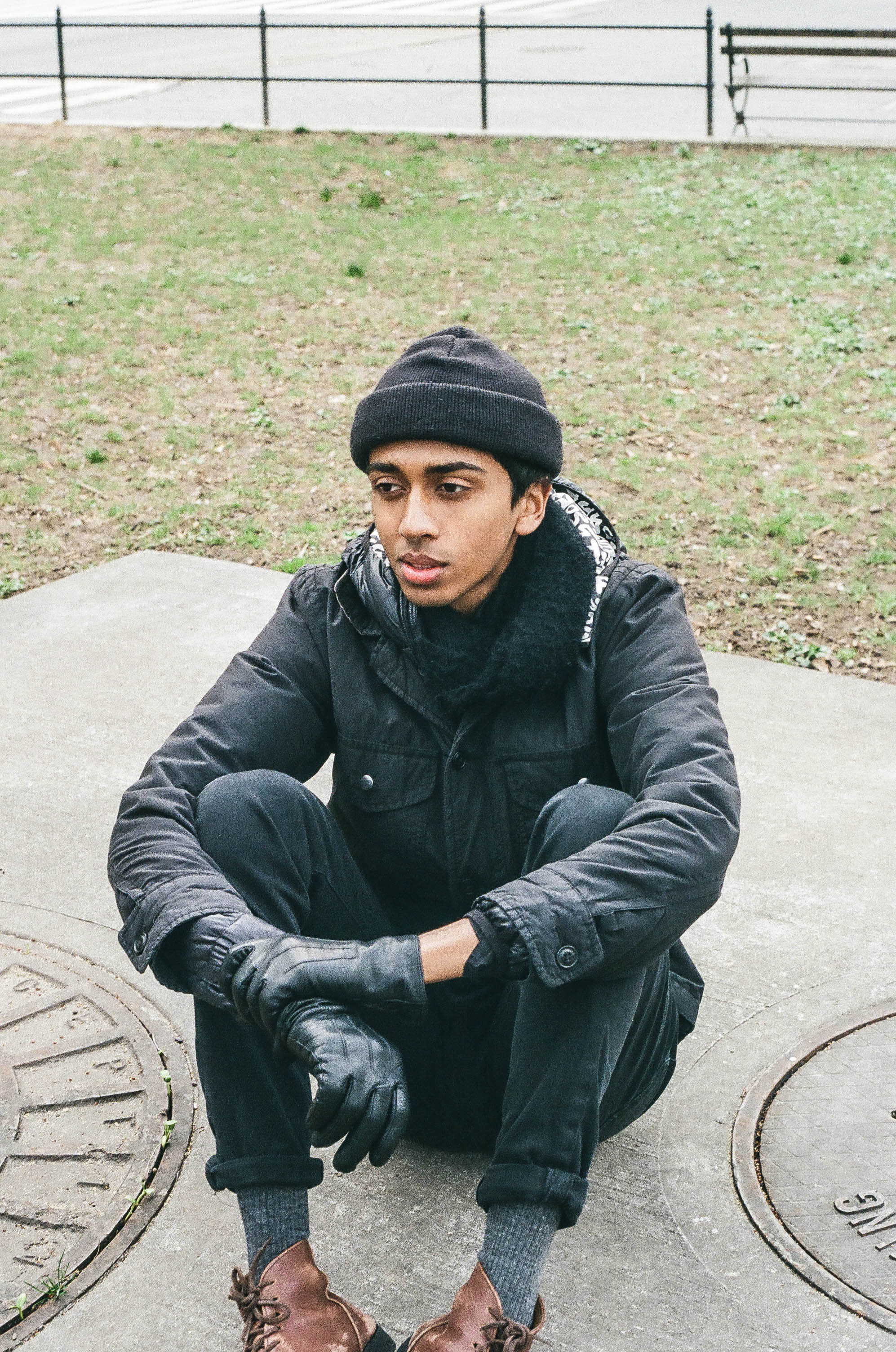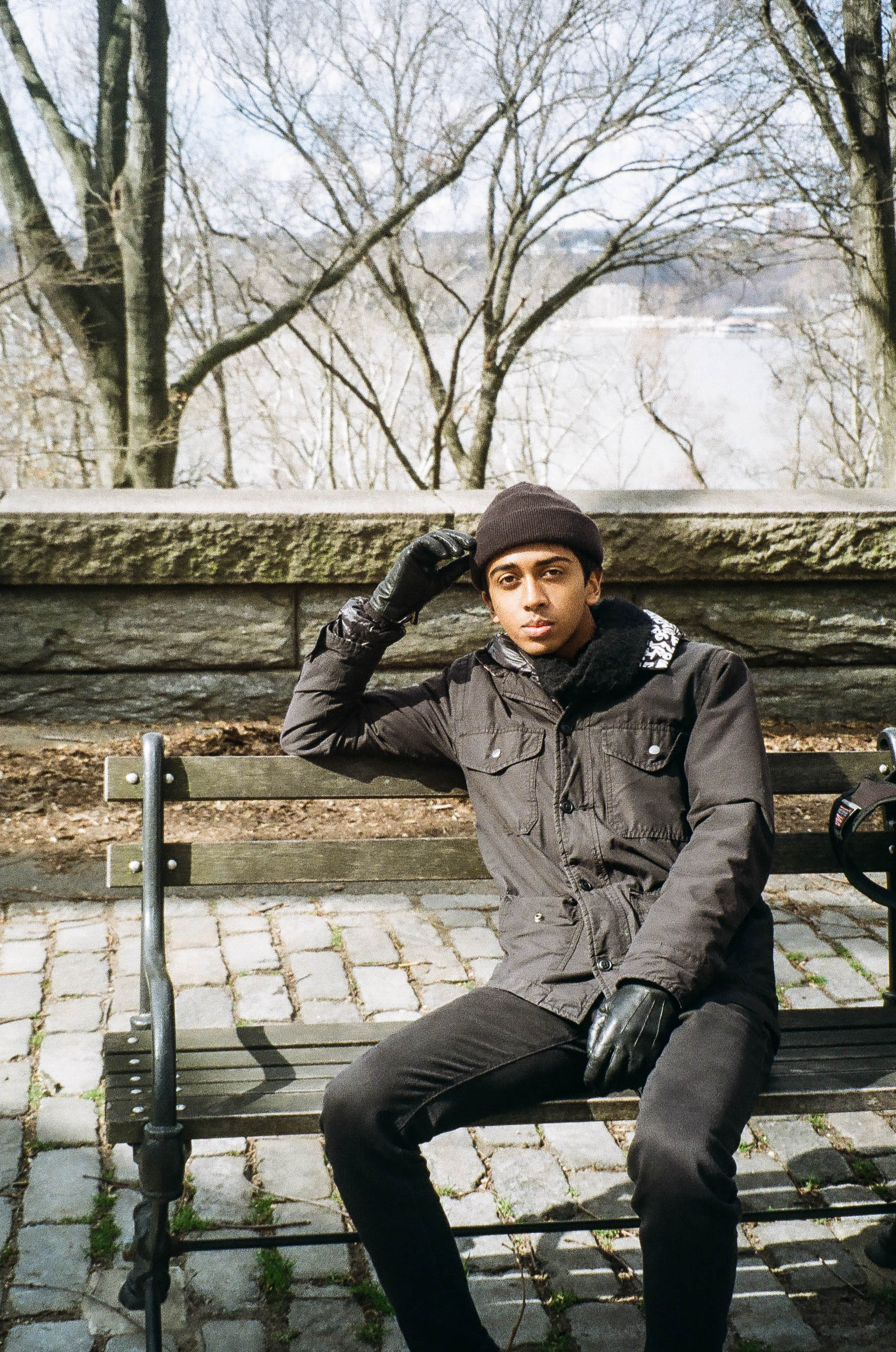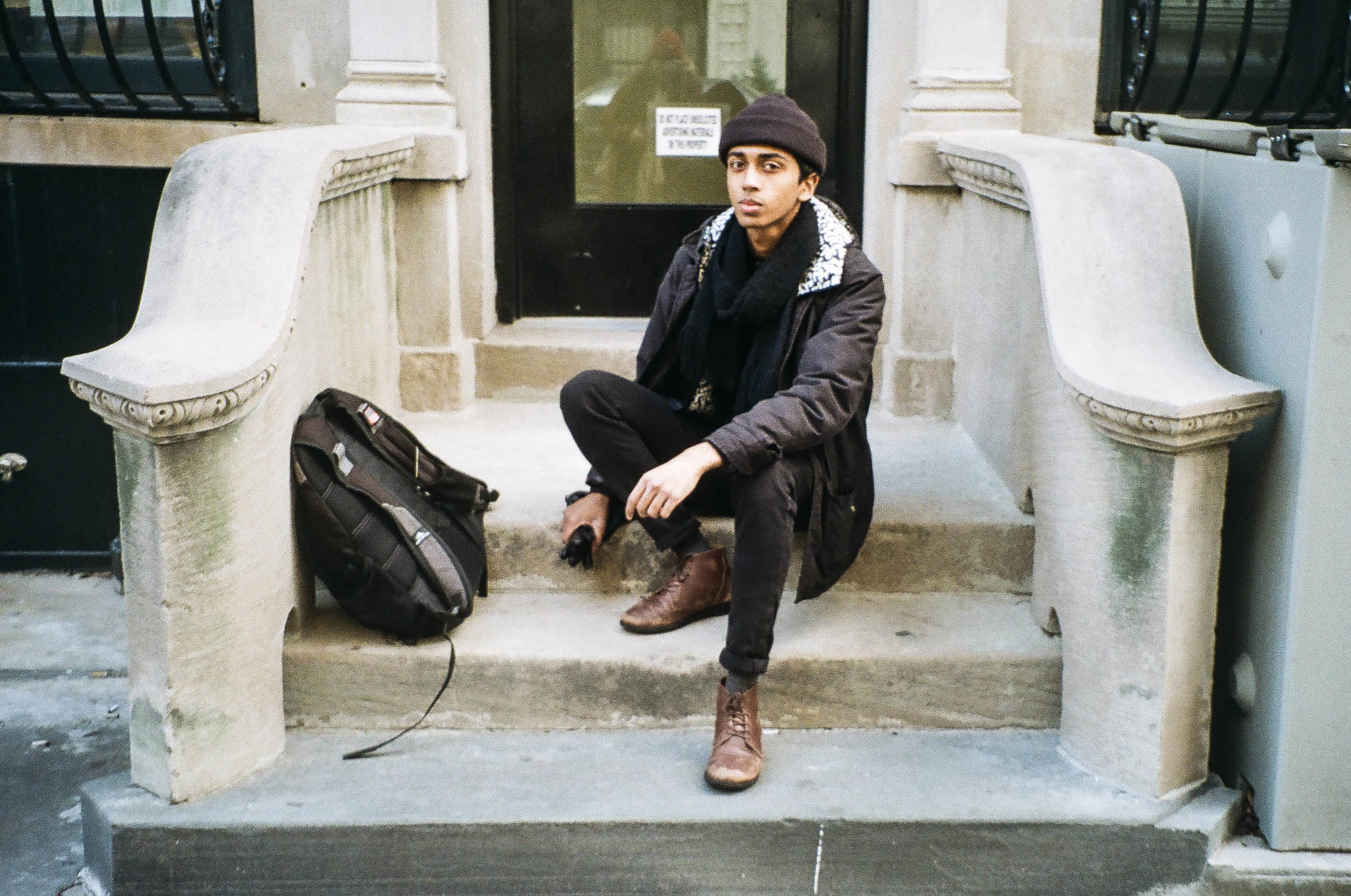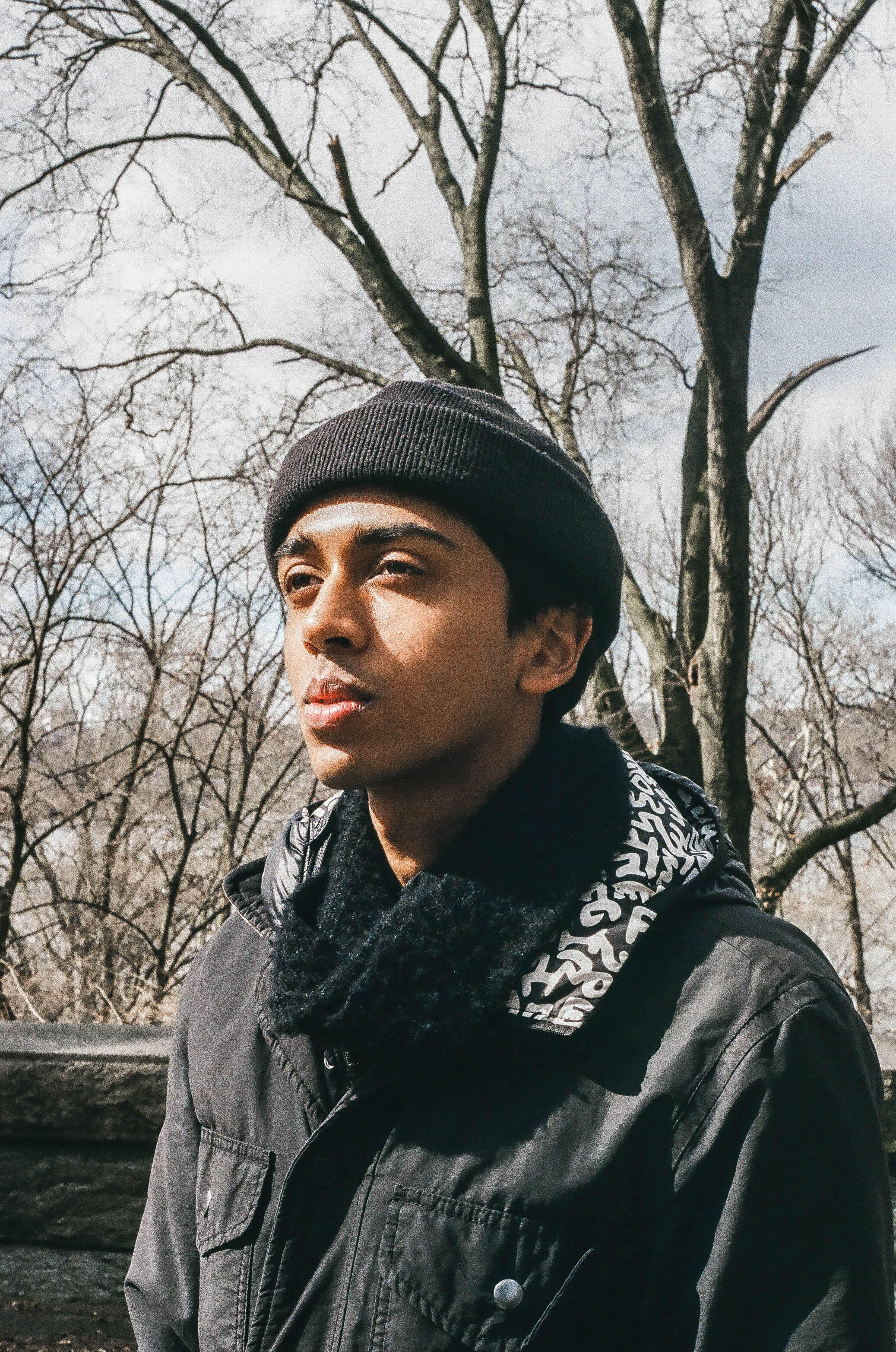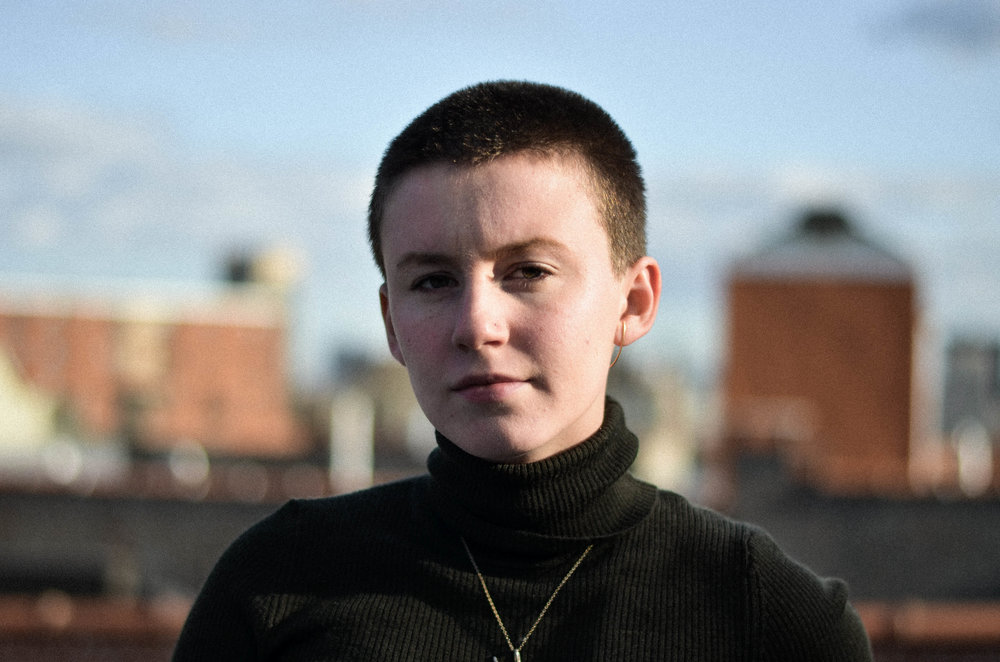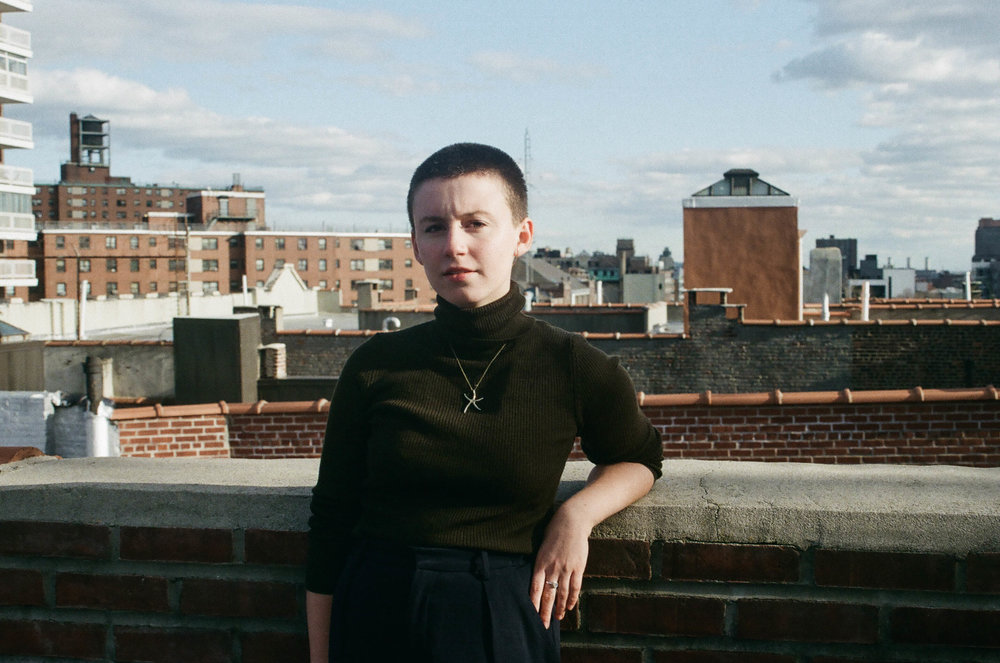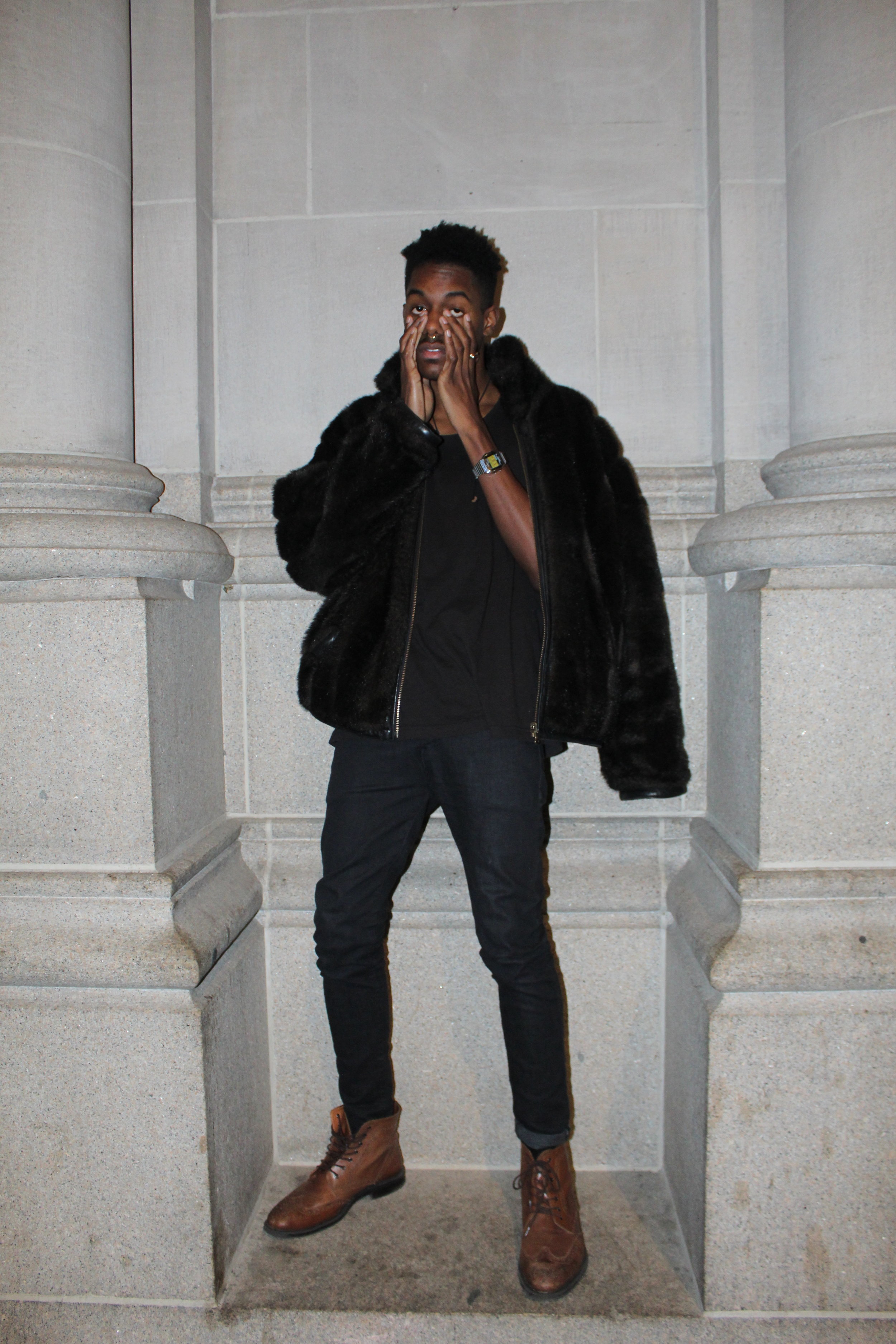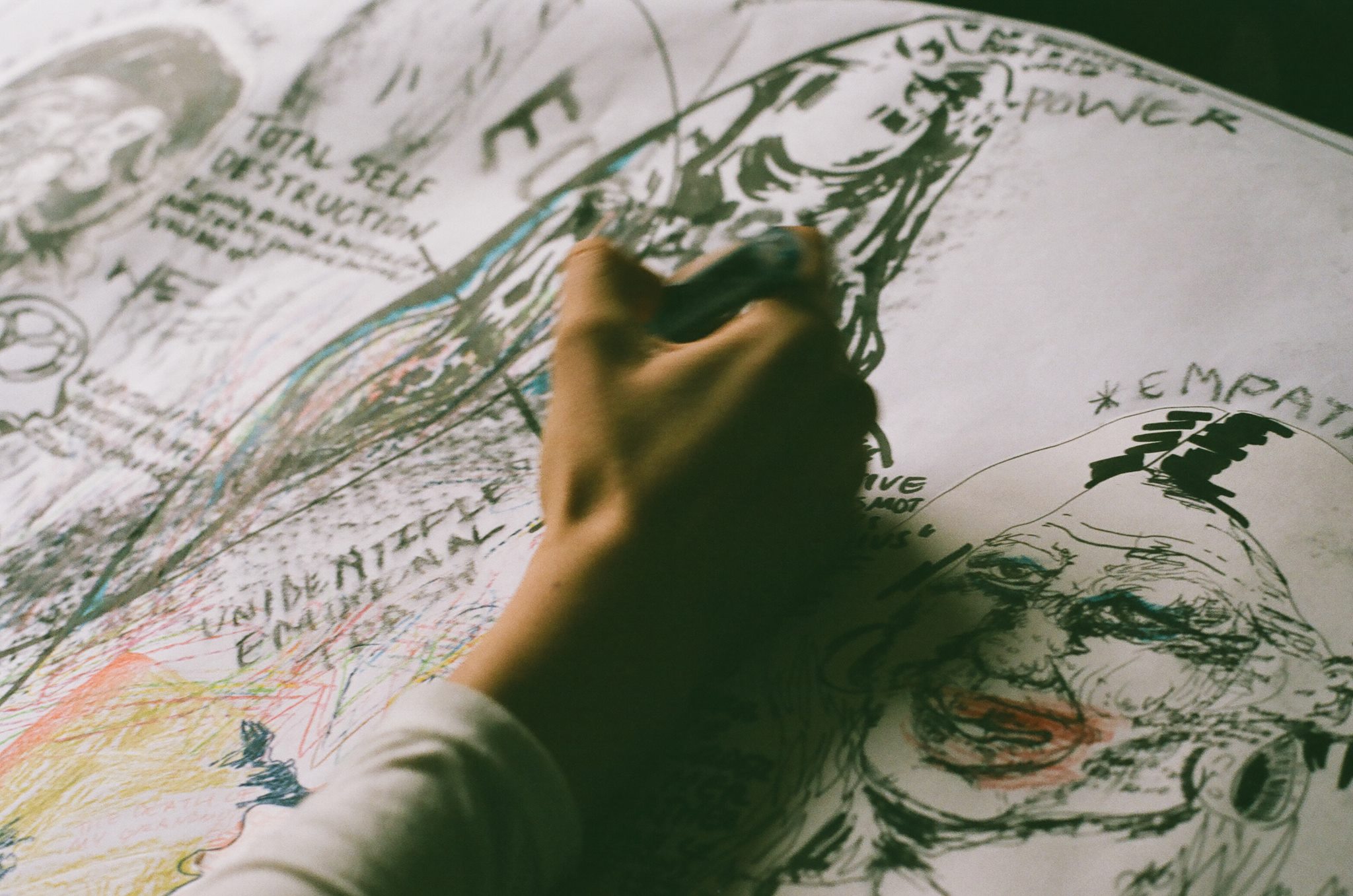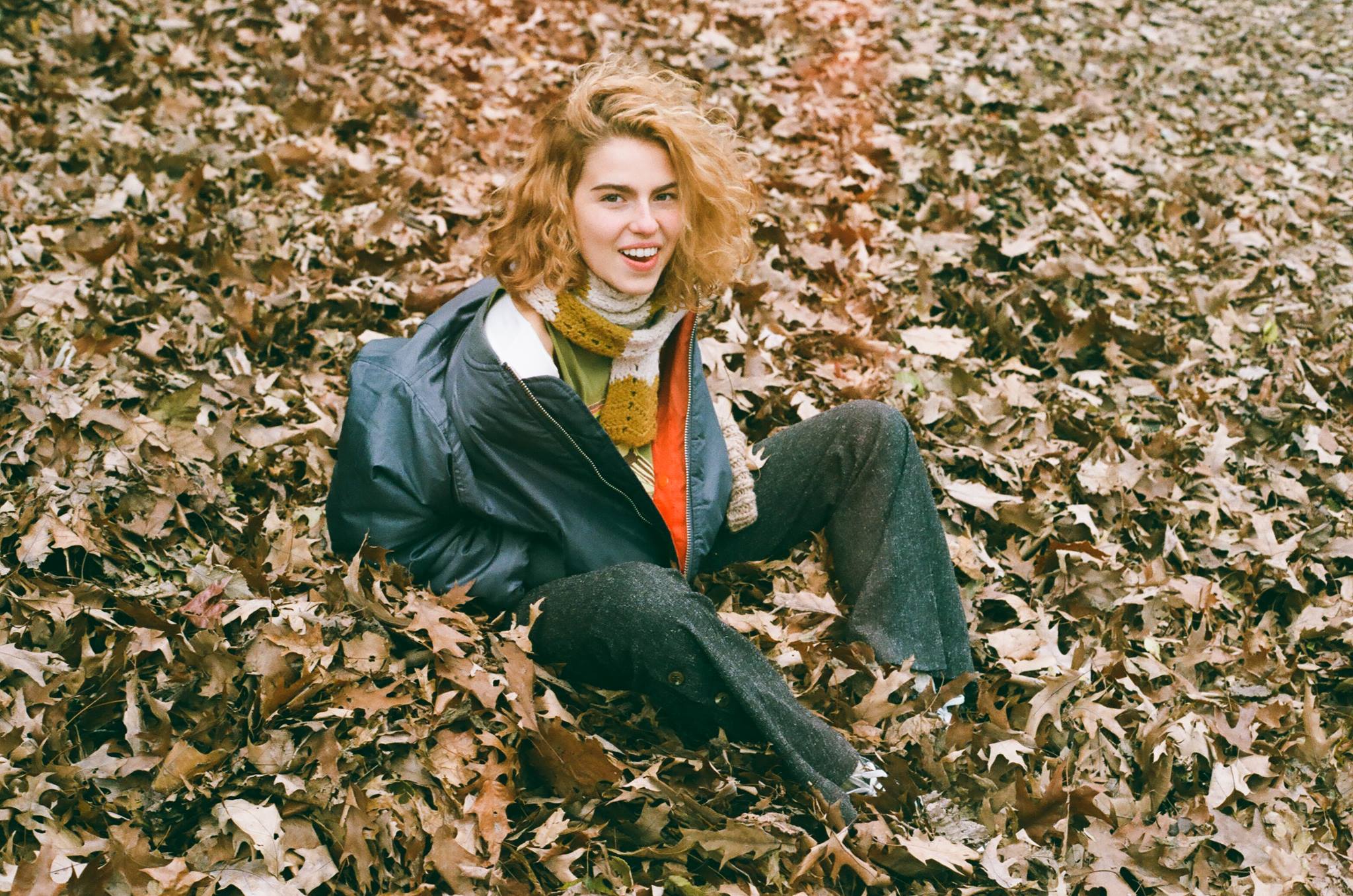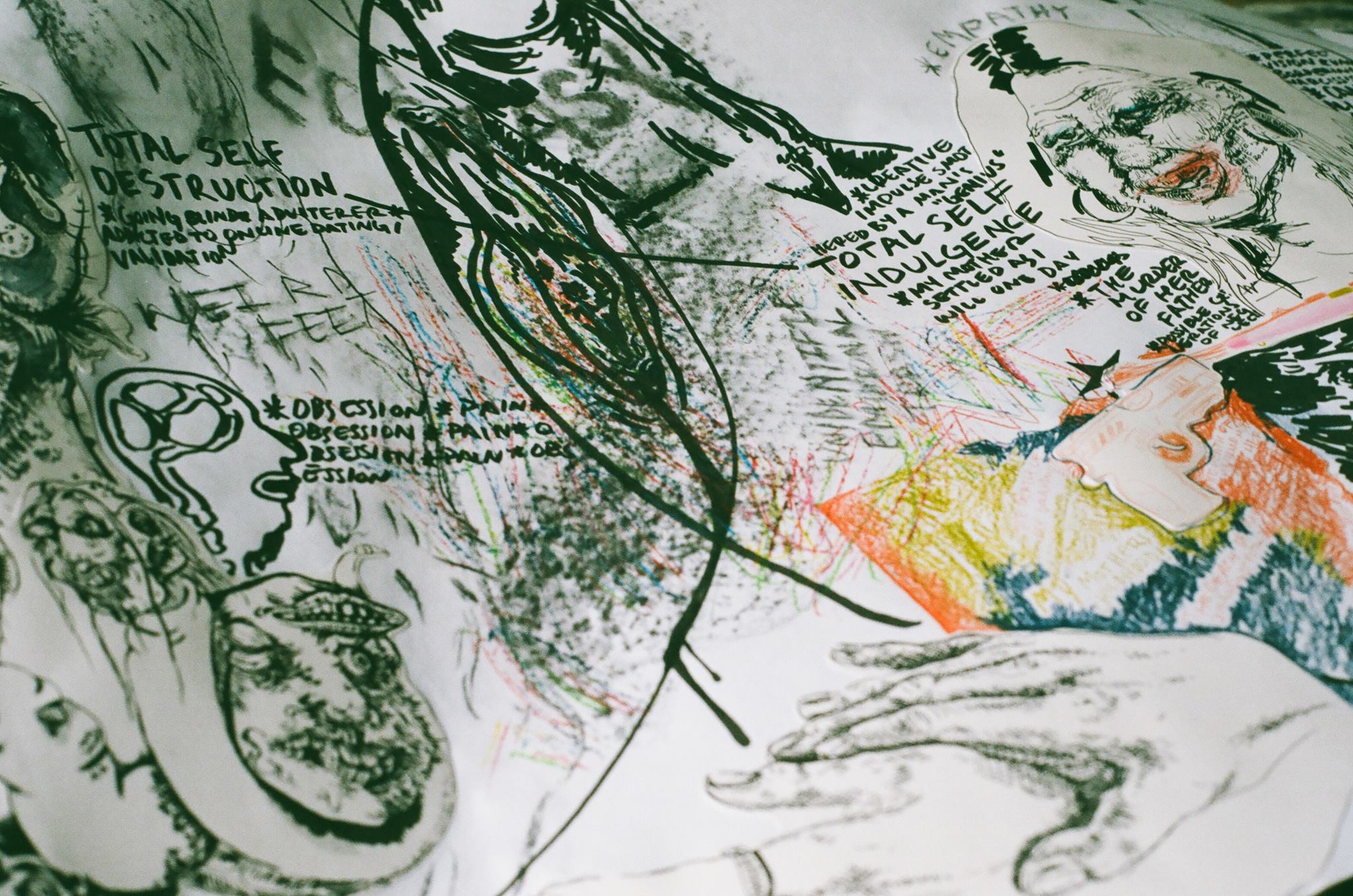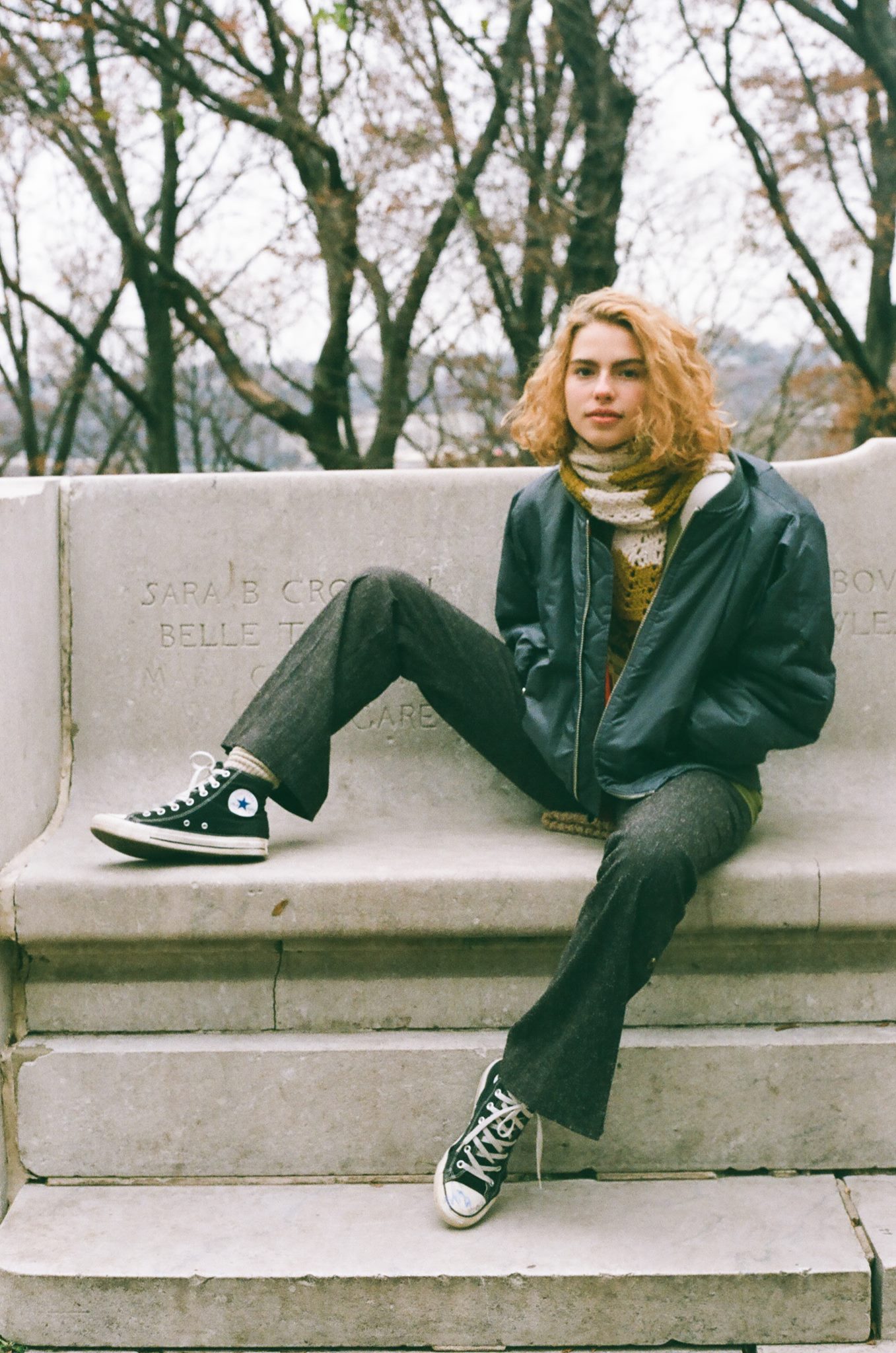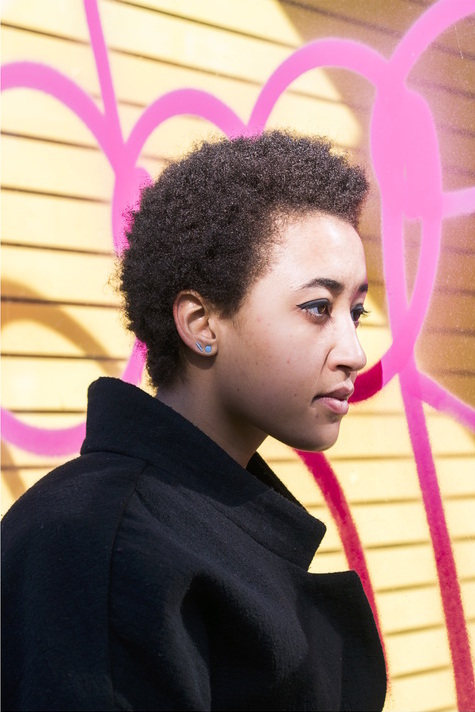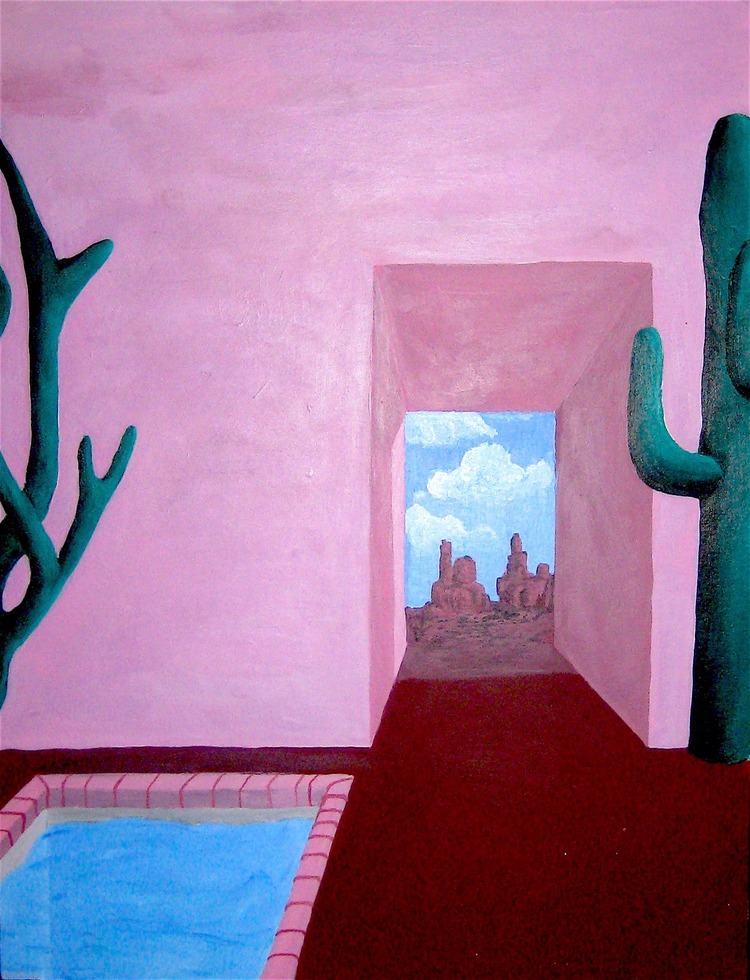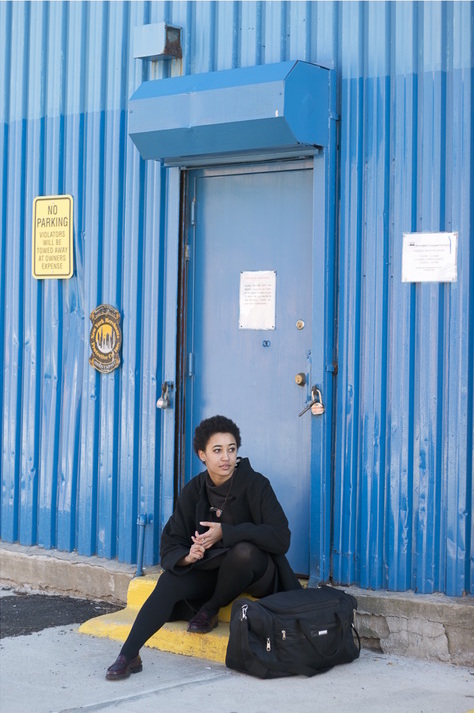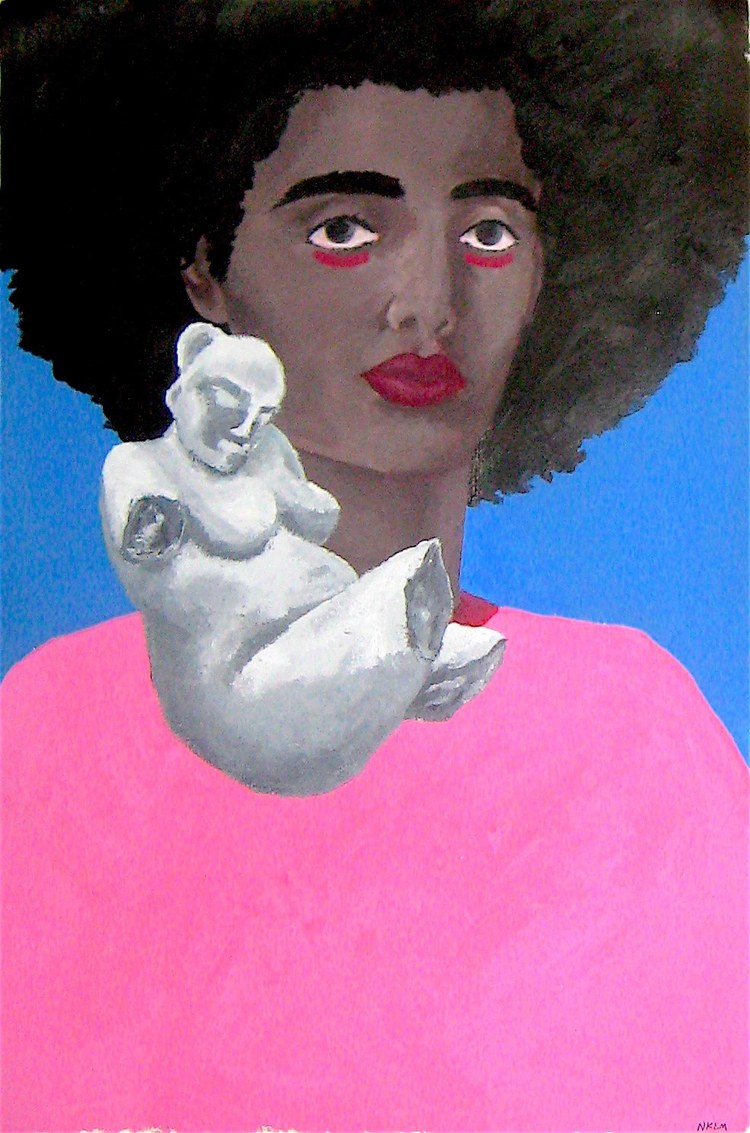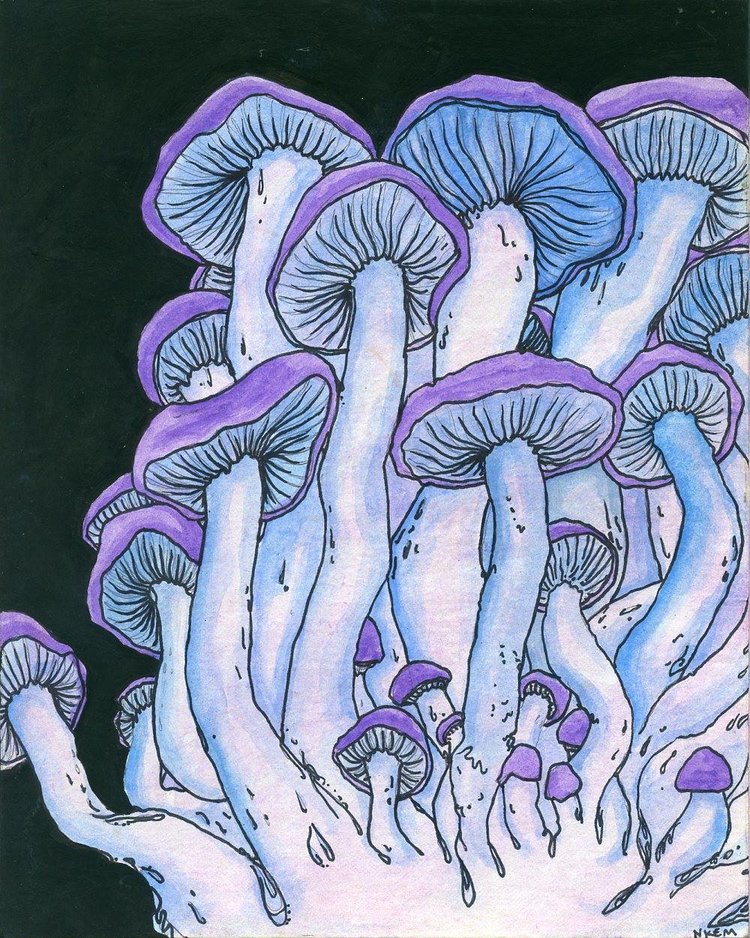





Photography by Clara Hirsch
Interviewed by Julia Flasphaler
When did you start making art?
I can’t remember, honestly. When I was younger I wanted to be a writer because I thought that it would take me all over the world. I used to make these really extensive sketches of covers, but then when you went to open the book, the pages were just scribbled lines. My parents would ask me what the books were about and I would see it in my head - I would frame them in terms of actors and lighting. I think at that point my dad was like, OK, she’s probably going to be interested in film.
You mentioned that you’ve traveled a lot - where did you live when you were growing up?
I’ve lived in Switzerland, Costa Rica, Cambodia, India, Thailand. I’ve also traveled to other countries. My favorite country that I’ve lived in is Switzerland. Just because I think it was the perfect place to be in for the age range I was at.
What age was that?
From four to six. It’s really funny because living in America, I think that you are aware of race and yourself and where you fit. But growing up in Switzerland, I never - it never occurred to me at all.
Do you feel like you’re also conscious of being a female artist? Does that play out in your work at all?
Kind of. I think that I’m more aware of it in film. It was something that everyone made me be aware of. I feel like when people talk to me about the female gaze, they expect that I’m going to represent females in the industry as a woman of color. That’s a lot of pressure.
Just because I've created something, doesn’t mean that you should take it as the work of a female woman of color who is now directing. You should see it as a work from a person, or just any other director. It’s something I was made to be aware of because I felt like without even seeing my work, people were putting it in the scope of a female person of color. But that’s not even what my work is speaking on. My work is speaking on me as a person. You can’t just label me and only view my work through such a limited scope.
I noticed that you work with a bunch of different kinds of art - what are your mediums?
I never really stick to one medium for too long because I get bored really easily. I remember in art class we’d have to do step-by-step paintings where you let it sit and dry and come back and do more. I could never do it. I would always want to do everything at once. It got to the point where I started crossing things over because I enjoy certain aspects of everything. Or there were times when I would start writing a film and I would think, oh gosh, this would be a great photo series. And then I would think, oh this would be a great idea for a collage. So one thing would lead to another thing, and then I would eventually cross everything over.
Did you take a lot of art classes?
Kind of. Just being with my dad and watching him draw influenced me a lot. My dad is also a director and I used to read all of his scripts. So it’s become easier for me to think in terms of film. I didn’t actually take a formal art class until high school. And then I kind of just did it on my own. Actually junior year, I didn't take any art classes and got really depressed. But I formed a really strong bond with my art teacher. She’d give me the keys to the studio so that I could go and make a bunch of stuff and then she would come back and look over my art and leave me notes. When I finally got back to art classes I realized that I had missed it so much. I was also forced to do a sport my senior winter but I’m horrible at sports, so I opted out and did an independent project instead. I presented my work and opted into doing this project called "The Art of the Gallery" that used painting, collage, photos and sculpture.
How do you find inspiration for your art?
One of the quickest ways for me to produce a piece of art is by listening to a piece of music. When I listen to something I see these emotions and then I can translate them. If someone said, OK, do a piece of art right now, I would just play a piece of music. Then I would produce it in whatever medium I felt like it was speaking to me in.
How did you make your collages?
Well, they’re all from photos that I took. I usually dress everyone and the models are my friends. I’m really into style too - all of my art pieces are pretty stylized when it comes to clothing. With the fruit heads, I felt this kind of ‘50s vibe. I was doing very stereotypical gender roles in that period. My thought was that the pastel colors fit that time period. I liked the contrast of the black and white because it felt very old time-y. Funny story, the fruit heads actually came in because I’ve always had a random thing for fruits in my names. I had a YouTube channel that was awful - never look at it - but every channel name that I had would always be a fruit. The first one was mangopeachslice, or like blueberryraspberrykiwi. Since then, I’ve been trademarking my stuff as ‘peachslices’. That’s my instagram name, and so the fruit heads idea came from that.
Do you use natural lighting or do you light your photos?
Both. I stage a lot of the intense lighting in my photos. I watch a lot of DIY lighting and film stuff. A lot of the outdoor ones are obviously natural - I just knew where I wanted to go. And unless someone says something to me, I’m not going to stop. They don’t know whether or not I have permission to be there, and I have no idea what I’m doing, so it doesn’t matter! I just learn how to make things work.
How did you write and shoot your short film? What did you shoot it on?
I shot it on a Canon 7D. It’s one of the cameras most used for short films - I was in high-school when I shot that, and I’ve done more since, but they’re not fully edited. I rented sound equipment for the first film that I shot, but for this one I did it all on my own because everyone else was in a sport. I was like, who’s going to do this? I am. It’s me and me. The Canon 7D sound is not good when it comes to sound so I knew that it had to be a silent film. Then I just had to deal with the challenge of making a movie without dialogue.
When it comes down to actually shooting a film or making a photo series, I have to find ways to make it work. I use a skateboard for every dolly shot in my films. Or I have people drive my car while I sit in the trunk. Or one time, my Dad was doing an underwater shot, so we went to petco and bought a fish tank. We put the camera in the fish tank and put it underwater. Everything came out clear, and it worked out really well. It looked like we had an underwater camera but we got it from petco for like $7. It was amazing.
Is it helpful but also intimidating having your Dad work in film?
Yes, completely. We actually got into a fight over my first short film. I wrote the script and told him that I finished it, and he was like, “I can’t wait to read it!” And I was like, “Oh yeah, you’re not reading it.” He was so surprised. I’ve always read all of his scripts, so I guess he just assumed that that would be reciprocated. But my Dad’s opinion holds so much weight for me and I didn’t want to have to deal with that. He knows that this is what I want to do with my life, so it would be so hard to hear him say, “Yeah, this is awful”. I felt like I needed to figure out my work for myself. So that film was a big step for me as an artist.
Do you know what you want to major in yet?
I want to do a minor in visual arts, but I’m concerned because I don’t know what I want to do for a major. I would like to go into the film industry, but Columbia doesn’t have a film minor. Honestly if I wanted to major in film, I would have gone to USC or Tisch.
In New York, I feel like I have the time and resources to make art and movies on my own. I’ve decided to just take the core until I’ve figured out what my major will be. Coming from a college prep school, I was so burnt out by my senior year. So I’m already trying to plan for that. I’d really like to just focus on my art by my senior year and take videography or photography classes.
Do you have other interests? Or other classes that you’re excited to take?
It’s really funny because I’m such an avid reader. It’s been very hard since I’ve gotten to Columbia. I love reading, it used to be so easy! I was that one kid in high school who refused to use Sparknotes. And I dance. I haven’t gone to dance that much since I’ve been here. But I used to go to the Debbie Allen Dance Academy back home. I used to dance every day for four hours.
How do you feel about LA as a city? Especially now that you’re in New York?
The tone of artists that I’ve met here- it’s different, and I like both of them. I love living in both places. I love talking with artists I meet here about how they’ve found their voice. The funniest part for me about LA and the biggest crossover, is food. I could meet people from different areas of LA, but if I mention a good restaurant, everyone is just hands down like - okay, I know that place. LA is the place I always go back to when I have nothing to do. I come to New York for school and I go to LA for breaks and I get to chill and hang out and make art. When I think of LA I think of just breathing.





























